ISSUE 73 BUSINESS | LIFESTYLE | DESIGN THE DESIGN, CREATIVITY & ARTS EDITION

Liquidity Management Accounts - giving you the power to manage your liquidity. Our suite of services are geared to support our customers with their banking requirements allowing access to world markets, interest rates and foreign exchange services - a personalised service through one relationship. T: E: PrivateBanking@sparkasse-bank-malta.com Speak to an advisor today. Sparkasse Bank Malta plc, 101 Townsquare, Ix-Xatt ta’ Qui-si-Sana, Sliema SLM3112, Malta. Sparkasse Bank Malta plc is a public limited liability company registered in Malta with registration number C27152 and registered office at 101 Townsquare, Ix-Xatt ta’ Qui-si-Sana, Sliema SLM3112, Malta. Sparkasse Bank Malta plc is licensed by the Malta Financial Services Authority to carry out the business of banking in terms of the Banking Act (Cap. 371 of the Laws of Malta), and to provide investment services and custody and depositary services in terms of the Investment Services Act (Cap. 370 of the Laws of Malta). Overnight deposits for professional customers - our goal is to support you in optimising your returns.
Banking

Banking | Custody | Investments
Investments - a personalised service through one relationship.
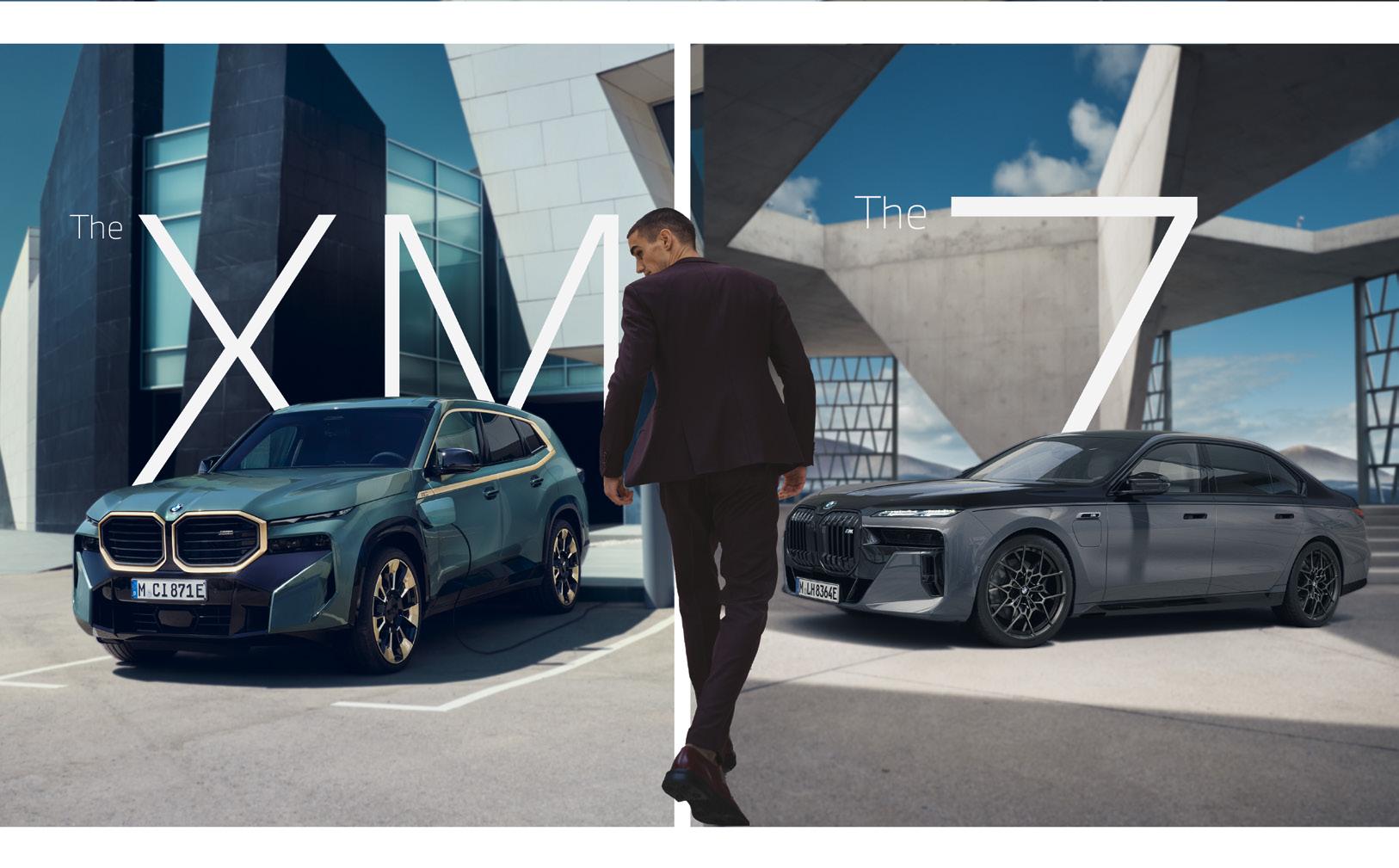

Altruism. Honesty. Virtue. It’s a common (albeit wrong) thought that the arts are just for hobbyists and people who want to do something fun and carefree in their spare time. As you read through this issue, you will encounter the stories of people for whom art is their job, their way of passing on a message to the community, and their way of life.
We are surrounded by various forms of art daily, without us even consciously realising this—from the music we listen to during our commute to the YouTube videos that entertain our children to give us a few moments of respite.
Now that life is moving on, cameras are rolling again, artists are back in their studios, and actors are back on stage, providing various genres of art for us to consume as we get entertained, educated, and transported into a different world.
An interview with film producers Pierre Ellul and Anika Psaila Savona, whose film Carmen has been chosen as Malta’s entry for the best foreign film category at the 95th Academy Awards, demonstrates that the Maltese film industry is continuously increasing and capable of creating highquality films.

It’s a significant step for the industry and the upcoming generation interested in entering the film world. It shows that dreams are not fantastical or imaginary—they can achieve their goals through hard work.
We tend to suffer from a “small island” mentality, which is dichotomous as, on the one hand, we believe ourselves to be the centre of the world. Anything that we do is exceptional, while also believing that the size of the island holds us back from achieving our potential because we don’t have the same opportunities as those who live in larger countries. It can be a toxic mentality as it fluctuates between illusions of grandeur and crippling self-doubt.
Theatre is an effective form of media to pass on a message to an audience that will lead them to think and question certain aspects of not just their lives but also the lives of people who are different. In theatre, we are introduced to different characters thanks to a script, and we get a glimpse into their lives, habits, and ways of thinking. That allows us to ponder and
question specific issues that we might not have paid much attention to previously. We can safely put ourselves in that character’s shoes and wonder whether we would have made the same decision. Of course, it’s easy to do this when it’s all hypothetical; however, the thoughts and questions can linger as we mull the play over in our minds for days after we would have watched it.
The power of theatre is much needed now. We are emerging from a pandemic that we had no chance to prepare for, and we aren’t emerging unscathed. There are physical and psychological issues that we carry around, unwanted baggage from a life-changing experience. We need theatre to force us to think about and remember issues beyond the pandemic. To make us realise that we must contribute to improving society and our community. We cannot just complain to our friends about the state of affairs in the country (or the world) and then be lazy when taking action.
The famous speech in Shakespeare’s As You Like It proclaims, “All the world’s a stage, and all the men and women merely players”—we are players in our own lives, but also the lives of others, and our actions have a knock-on effect. So let’s ensure that the decisions behind our actions are taken from a place of altruism, honesty, and virtue. If we had more of that and less of the greed, we’d live in a much happier place.
You may have wondered why our front cover looks different to what we usually print. It’s an initiative to inspire 1 million humans worldwide to rebuild a better future together. I invite you to scan the code and be part of the movement.
COVER To inspire 1 million humans worldwide to rebuild a better future together. Scan and join the movement.
EDITOR Anthony P. Bernard
[anthony@moneymag.me]
DESIGN BloomCreative [bloomcreative.com.mt]
PRINTING Print It
DISTRIBUTION JD Distributors
MONEY is hand-delivered to Malta’s businesses, including managers and directors of the country’s top blue-chip companies, iGaming companies, all 5-star hotels, including their business centres, executive lounges and rooms (where allowed), all foreign embassies and Maltese embassies abroad (the UK, Rome, Brussels and Moscow). All government ministries and entities.
For information regarding promotion and advertising: (+356) 2134 2155 · [hello@moneymag.me]
Money is published by Be Communications Ltd, No. 81, Howard Street, Sliema, Malta SLM 1754 FACEBOOK-SQUARE LINKEDIN · [becommunications.com]

All rights reserved. Reproduction in whole or in part is strictly prohibited without written permission. Opinions expressed in Money are not necessarily those of the editor or publisher. All reasonable care is taken to ensure truth and accuracy, but the editor and publishers cannot be held responsible for errors or omissions in articles, advertising, photographs or illustrations. Unsolicited manuscripts are welcome but cannot be returned without a stamped, self-ad dressed envelope. The editor is not responsible for material submitted for consideration.

ISSUE 73 MONEY06 WELCOME
ANNIVERSARY YEARS















































Since our launch in 2002, our blend of compelling content and superb photography with features on business, politics, yachting, tech and social issues continues to make each beautifully crafted magazine a collectors’ item. The years quickly established a reputation as a dynamic, high-end publishing house brought together by an emerging set of designers, photographers, stylists and writers tied by a search for creativity and authenticity. And as we celebrate our 20th anniversary, we’d be nothing without the support of all our advertisers with who we’ve been lucky enough to work with over the years.











































































































































































OFFICE DESIGN CONTAGIOUS CAMPAIGNS INTERVIEWS: HARLEQUIN DESIGN, DUNCAN BONE, NOMAD START-UPS ROLEX MIDDLE SEA RACE 2012 SPECIAL EDITION NEW MODEL REVIEWS CLUB EVENTS EXCLUSIVE INTERVIEW: VOLVO OCEAN RACE TEAMS KURT ARRIGO LOCAL AND INTERNATIONAL NEWS VOLVO OCEAN RACE: SPECTACULAR FINISH INTERVIEW: KEN READ CITADEL KEELBOAT SPRING SERIES REVIEWS: SEALINE F530 AND JEANNEAU 54 ROLEX FASTNET RACE ALEX THOMSON: EXCLUSIVE IN ERVIEW CLE TE M US CONQUERS AMERIC OLEX MIDDLE RACE AKING DVEN URES Taking line honours RMSR 2012 IIG Bank Gozo Race RMSR 2012 in pictures GETTING SPRING COMPLEXIONBACK TO THE 1990 AND THE GUEST WORE... PRINTS AND ACCESSORIES Chefs with tattoos The cocktail hour cometh Recipes for success Esimit Europa 2 takes line honours Winning the Rolex Middle Sea Race Renzo Grottesi –a sailor’s life TECHNOLOGY SEA MAL RUISING LUB TROPHÉE AILLI DE UFFREN LA ES MO OR BOA REVIEWED 177 RESOLUTIONS TROUSERS YOUR LOOK VOLVO OCEAN RACE: SPECTACULAR FINISH INTERVIEW: KEN READ CITADEL KEELBOAT SPRING SERIES REVIEWS: SEALINE F530 AND JEANNEAU 54 ROLEX FASTNET RACE BARCELONA WORLD RACE THOMAS MEACHEN RC44 VALLETTA CUP VOLVO OCEAN RACE REVIEWS CLEAN TECHNOLOGY GREEN FINANCE INTERVIEW WITH MINISTER AUSTIN GATT TIFF LOVE interview winner TopModel Trying out new recipes? 5 why you should SHOP on myfood.mt DESIGN CONTAGIOUS CAMPAIGNS HARLEQUIN DESIGN, DUNCAN BONE, NOMAD START-UPS ROLEX MIDDLE SEA RACE 2012 SPECIAL EDITION NEW MODEL REVIEWS CLUB EVENTS EXCLUSIVE INTERVIEW: VOLVO OCEAN RACE TEAMS KURT ARRIGO LOCAL AND INTERNATIONAL NEWS COOL OFFICE WEAR SUMMER COLOURS 181 ALEX THOMSON: EXCLUSIVE IN ERVIEW CLE TE M US CONQUERS AMERIC OLEX MIDDLE RACE AKING DVEN URES Taking line honours RMSR 2012 the Malta team IIG Bank Gozo Race RMSR 2012 in pictures GETTING SPRING COMPLEXIONBACK TO THE 1990 AND THE GUEST WORE... PRINTS AND ACCESSORIES ABOUT YOU ROCK THE BAROQUE LOOK Esimit Europa 2 takes line honours Winning the Rolex Middle Sea Race Renzo Grottesi –a sailor’s life TECHNOLOGY SEA MAL RUISING LUB TROPHÉE AILLI DE UFFREN LA ES MO OR BOA REVIEWED TIFFANY PISANI 177 FASHION RESOLUTIONS RECYCLING YOUR LOOK IN PURPLE VOLVO OCEAN RACE: SPECTACULAR FINISH INTERVIEW: KEN READ CITADEL KEELBOAT SPRING SERIES REVIEWS: SEALINE F530 AND JEANNEAU 54 ROLEX FASTNET RACE BARCELONA WORLD RACE THOMAS MEACHEN RC44 VALLETTA CUP VOLVO OCEAN RACE REVIEWS TIFF LOVE Exclusive the winner NextTop A WEALTH OF EXPERIENCE Trying out new recipes? 5 why you should SHOP on myfood.mt OFFICE DESIGN CAMPAIGNS HARLEQUIN DESIGN, DUNCAN BONE, NOMAD START-UPS ROLEX MIDDLE SEA RACE 2012 SPECIAL EDITION NEW MODEL REVIEWS CLUB EVENTS EXCLUSIVE INTERVIEW: VOLVO OCEAN RACE TEAMS KURT ARRIGO LOCAL AND INTERNATIONAL NEWS SUMMER COLOURS 181 ALEX THOMSON: EXCLUSIVE IN ERVIEW CLE TE M US CONQUERS AMERIC OLEX MIDDLE RACE AKING DVEN URES Taking line honours RMSR 2012 the Malta team IIG Bank Gozo Race RMSR 2012 in pictures GETTING SPRING COMPLEXIONBACK TO THE 1990 AND THE GUEST WORE... PRINTS AND ACCESSORIES HAIR COLOUR SAYS ABOUT YOU ROCK THE BAROQUE LOOK Esimit Europa 2 takes line honours Winning the Rolex Middle Sea Race Renzo Grottesi –a sailor’s life TECHNOLOGY SEA MAL RUISING LUB TROPHÉE AILLI DE UFFREN LA ES MO OR BOA REVIEWED TIFFANY PISANI 177 FASHION RESOLUTIONS SKIRTS RECYCLING CHRISTMAS IN PURPLE VOLVO OCEAN RACE: SPECTACULAR FINISH INTERVIEW: KEN READ CITADEL KEELBOAT SPRING SERIES REVIEWS: SEALINE F530 AND JEANNEAU 54 ROLEX FASTNET RACE BARCELONA WORLD RACE THOMAS MEACHEN RC44 VALLETTA CUP VOLVO OCEAN RACE REVIEWS TIFF LOVE Exclusive with winner Britain’sNext A WEALTH OF EXPERIENCE Trying out new recipes? 5
bemags.com
Lights camera action
Giselle Borg Olivier speaks to the husband-and-wife team, Pierre Ellul and Anika Psaila Savona , behind Falkun Films about their upcoming cinema releases ‘Carmen’ and ‘War Sailor’ and what it’s like to be involved in the film industry on a small island like Malta.
Selling art that matters
We Art Love is an e-commerce platform that sells art with a cause. It exists to generate widespread awareness and financial support. MONEY spoke with the founders, Josh O’Cock and Georgia Star Reed , about their mission.
Placing St Julian’s on the street art map
Greening promises: fantastic or fantasy?

During the electoral campaign of 2022, the Labour Party promised a €700 million investment over seven years to create green spaces in urban areas. Giselle Borg Olivier speaks to Prof. Alex Torpiano in his capacity as Dean and Head of the Department of Architecture & Urban Design to get his views on this undertaking.
18 22
When ugliness becomes normalised... theatre speaks

Lyndsey Grima talks to Herman Grech , Luke Saydon , and Marta Vella , three playwrights responsible for producing moving productions meant to challenge the audience and the world we live in.
12 26 36 39 42
Greening Malta’s concrete rooftops
MONEY met with the team behind the STJ Canvas, a project to beautify the island’s busiest tourist destination and motivate people to start maintaining their third-party walls.
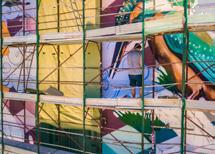
Forms of beauty
MONEY’s pick from the world’s best designers.
Malta is Europe’s most concretedover country. Can government funds and garden activists like Piscopo help to regreen Malta and move away from our “concrete jungle” status? asks Lea Hogg.
28 32
The future is now
Mind-boggling! These are the two words Claude Camilleri , NFT artist and co-founder of Miloman NFT Hub, would use to describe the current state of opportunities for designers, creatives, and artists alike.
Malta’s cultural gem
MONEY speaks to Joanne Sciberras, director of Library Operations and Head of Outreach at Malta Libraries, about its origin, historical archives, and outreach programmes.

ISSUE 73 MONEY08 CONTENTS
Monetary tightening in an economic turmoil scenario
Jordan Portelli believes we have reached a tipping point, as irresponsible actions can shift the economy from a desired soft landing to unfavourable territory.
46
The need for a creative economy
JP Fabri considers the creative economy addresses vital social and cultural demands such as cultural representation and social cohesiveness. It has also become an increasingly vital contributor to economic growth in recent years.
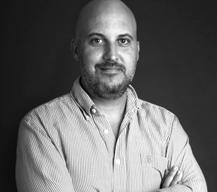
Building a culture of innovation
This year, Richard Muscat Azzopardi got the opportunity to participate in the first Vistage Executive Leadership Programme for Europe. It’s a nine-month programme comprised of three courses meant to assist you in developing an organisation that is strategically driven, has a growth mindset, and is ready for innovation.

Giselle is a marketing professional, and independent writer and proofreader. She runs Content for Success.


FILM P.10 · URBAN DESIGN P.12
Jordan is an economist and CIO / portfolio manager for a local financial services company.
ECONOMY P.44
Autumn apparel
MONEY welcomes the new season with a show of delectable fashion pieces.
JP is a founding partner at Seed, a multi-disciplinary advisory practice. ECONOMY P.46
Lea produces and hosts a popular current affairs TV show. She provides multi

media content, analysis, forecasting and assessment reporting for a number of international corporates.
GREENING P.28
Lyndsey is a freelance writer and social media marketeer. When she’s not typing away, you will find her focusing on her training at the gym.
THEATRE P.22
Richard is the CEO of Switch — Digital & Brand, a marketing agency that forms part of ICOM, the world’s largest network of independent agencies.
MARKETING P.48

MONEY THE DESIGN, CREATIVITY & ARTS EDITION 09 CONTENTS
48 56 44

GasanZammit Motors Ltd., Triq il-Merghat, Zone 1, Central Business District, Birkirkara, CBD 1020 Tel: 27788225 email: volvo@gasanzammit.com www.volvocars.com.mt

The shape of things to come. Meet the 100% electric C40 Recharge
LIGHTS CAMERA
ACTION
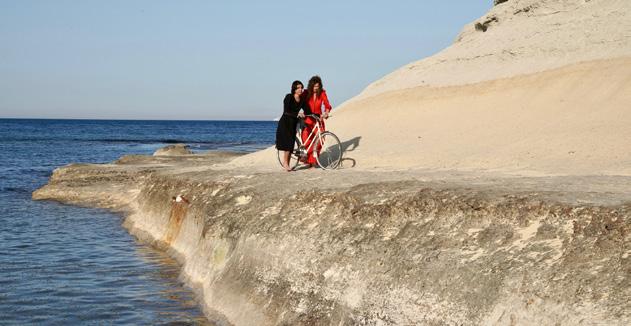

ISSUE 73 MONEY12 FILM
Giselle Borg Olivier speaks to the husband-and-wife team, Pierre Ellul and Anika Psaila Savona , behind Falkun Films about their upcoming cinema releases ‘Carmen’ and ‘War Sailor’ and what it’s like to be involved in the film industry on a small island like Malta.
Anika Psaila Savona and Pierre Ellul are a dynamic duo whose passion for the film industry is palatable even through the screen of a Zoom call, which is where we conducted this interview and had a very insightful conversation.
The intention was to speak to them about the films that they’re currently involved in – Carmen, which, if you’ve been scrolling through Facebook at all during the last couple of weeks, would have certainly tried to gain your attention by showing you snippets of an interview with the director, Valerie Buhagiar. And then there’s War Sailor, a narrative that Anika describes as “a story that matters”. War Sailor tells the tale of Norwegian merchant sailors caught up in a war they did not ask to be part of.
While we certainly touched upon each film, Anika and Pierre also explained the mechanics of being literally behind the scenes and what the role of a producer entails.
Getting involved in the productions The storyline of Carmen is simple but poignant – In a small Mediterranean village, Carmen has looked after her brother, the local priest, for her entire life. When the Church abandons Carmen, she is mistaken for the new priest. Carmen begins to see the world, and herself, in a new light.
Pierre explains how he first heard about Carmen in 2014 when the writer and director Valerie Buhagiar contacted him as she was looking for a Maltese producer. It was the beginning of a long process that started with Valerie coming to Malta to scout for locations since the film was to be shot in its entirety on the Maltese Islands.
“Carmen is a bit of a funny one. Originally, we were the minority co-producer, but at the eleventh hour, Canada lost finance whilst Anika brought in new finance, and things flipped. We became the majority co-producer, and Canada became the minority. It was a very interesting dynamic.”
Anika agrees, adding, “however, we approached it in an atypical way since we treated it as a total partnership because collaboration is key in film. ‘It takes a village’ is one of Valerie’s favourite sayings.” The pair emphasised the importance of every person
Other countries put a cap on funding so that it’s not just one project receiving millions as happens here.
on set. “There’s a whole team of people and every single individual on set, whether behind the camera, on camera, post-production... everyone has a part to play, and a film doesn’t get made if you’re missing one person. And this applies to all sorts of projects, be they features, TV series, documentaries or short films.”
“What’s interesting about film is that it brings together many different disciplines – sound designers, art directors, actors… you have several creative disciplines that come together in a film, which is the beauty of the medium. Plus, it lasts. Unlike a theatre piece, which, once the run is done, it’s over, with film, you can still go back and watch a film that was made 50 years ago.”
From a producer’s point of view
Pierre provides further insight into the making of a film, explaining that a film is made three times. It’s first written, then it’s shot, and then it’s edited in post-production. At every step, a film can change and even end up being ruined in the post-production phase! “It’s very much a living creature. Once you have a script and start shooting, from a creative process, it is alive. Then, when you go into the editing room, it can take on a different form altogether; when it’s getting cut up, changes keep happening. So the creative process is happening throughout.” »
MONEY THE DESIGN, CREATIVITY & ARTS EDITION 13 FILM
The process sounded fascinating but left a puzzling question – with so many changes happening, who has the final say? Anika explains that it depends on the project. “With the big studios, the producers usually decide, unless the director is someone like Spielberg. In the independent film world, the approach is very different. A producer’s job is to help the director achieve their vision. This is what happened in both Carmen and War Sailor. It’s always a collaboration, a conversation. Then it would depend on the dynamic of each film and the relationship between the parties.” War Sailor is written and directed by the inspirational Gunnar Vikene and “is a beautiful story that just needs to be told.” It has just had its international premiere at the prestigious Toronto International Film Festival (TIFF), which this year has come back in full swing following the two years of the pandemic. Carmen is a story by Valerie Buhagiar (who also directed); it was selected by TIFF in 2021 and was recently released in Canada to great acclaim.
“Pierre and I have the privilege of coproducing War Sailor with Maria Ekerhovd of Mer Films and Karsten Stöter of Rohfilm Factory, while for Carmen, Falkun Films co-produced with Coral Aiken of Aiken Heart Films, with Pierre as the lead producer.”
The role of a producer is quite arduous as they are responsible for many areas of the production, from raising finance to putting the team together to identifying the best way of distributing the film once it’s done to ensure that it reaches its intended audience. Pierre explains that a producer is involved in a film from the very start to the very end, and this is often a matter of years – Carmen took around three years to be released, markedly due to COVID-19 delays, where the post-production house had to shut down. However, War Sailor had a different experience as shooting finished in October 2021, with the film released just one year later.
Apart from unforeseeable hurdles (like a pandemic), new challenges have also come into play in the film industry, such as the increased dominance of platforms like Netflix that provide direct competition to cinema theatres.
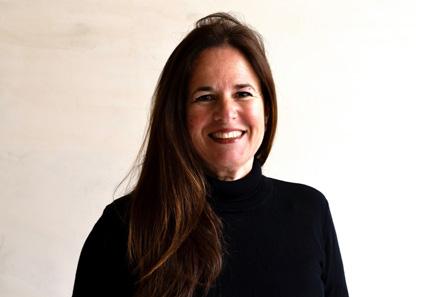
“One of the important benefits of producing our films is that we can try and protect rights for the film to Malta. Malta is usually thrown
in with the UK for distribution rights, and we often do not get the chance to see certain foreign independent films because of this, a remnant of our colonial past.”
Establishing a Malta film industry
Anika and Pierre explain that this is one of the many reasons why it is so essential to establish a fully-fledged film industry in Malta that focuses on films that are shot and produced here and not simply paying attention to service
foreign productions where Malta is simply used as a location.
“As Falkun Films, we mostly look at coproducing because of the creative input, as that is where you actually have a stake in the project. So many films that shoot here are service jobs, and they’re not Maltese films.” They explain that films with Maltese producers are considered partly Maltese, which helps to create a Maltese film legacy and helps the industry grow. It also allowed the Maltese crew to work overseas, as in the case of War Sailor, where the crew were sent to Germany and Norway. While Malta does have an amazing service industry, the local film industry is still very much in its infancy.
Unfortunately, as a country, we do not have the structures in place yet to help grow and nurture the indigenous film industry. Pierre and Anika explain that they keep losing crew due to the irregularity of work here. “When you’re trying to nurture talent, at every level, and you keep having to start over all the time, it’s incredibly frustrating.”
The rebate scheme
Malta’s rebate scheme is well known to the film industry. It is mainly used to attract service projects to film in Malta but is also an intrinsic part of helping a local film industry grow and should ideally work hand in hand for maximum benefit. Servicing is essential for the country as it generates economic activity for many different sectors, primarily hotels. Therefore,
ISSUE 73 MONEY14
FILM
When you’re trying to nurture talent, at every level, and you keep having to start over all the time, it’s incredibly frustrating.
the film and tourism industries should work in parallel to generate economic activity that will benefit everybody involved.
“Other countries have a more structured rebate where the focus is the growth of the indigenous industry and the nurturing of local filmmakers. In fact, with most, you need to have a local producer on board, not just a service provider, to access such rebates. However, as it currently stands locally, the funding goes directly to the foreign producer in a service scenario. A way in which other countries have differentiated between service productions and local/co-productions is to tier the rebate according to whether it’s either a service production or whether it has a local producer on board, giving the latter a higher rebate than a service production. Moreover, other countries put a cap on funding per project so that it’s not just one project receiving millions in rebate as happens here.”
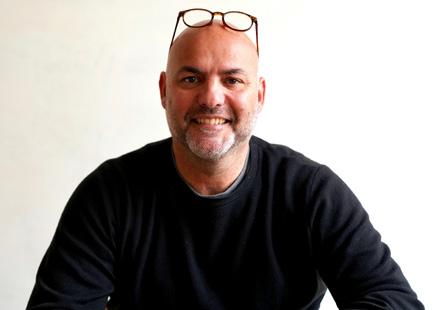
Currently, the only requirement that the Malta Film Commission has in the rebate scheme is that one must have a service production company attached; however, the applicant is a foreign producer, not a Maltese company. In other countries, there is a prerequisite that you must have a local producer on board, not a service provider. Since this is not necessary for Malta, a foreign producer would say, ‘I’m going to get this money anyway, so why should I bother with a Maltese producer?’ It then boils down to the relationship and collaboration, as
well as the open-mindedness of the foreign producer, to involve a local producer who would effectively sit at the table. And sitting at the table is vital because that’s how one has a stake in the project, to help the local crew get better positions and have an impact on the industry. It’s all about safeguarding the interests of the local film industry and protecting the resources it offers.
It’s important to emphasise the use of local resources too. Although it is meant to be the rule here, it is not consistently enforced, so
workers are brought in from overseas when Malta has people capable of performing that same role. But, Pierre adds, “this is a very complex discussion which goes beyond the scope of this conversation.”
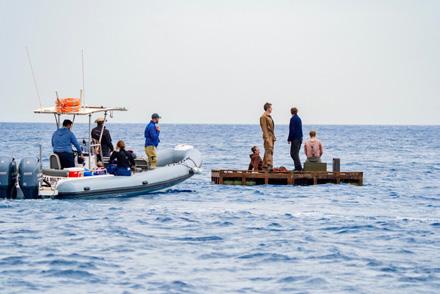
“Most countries offer rebates, so this is a very competitive environment. Malta is unique as a location because the country can double up for so many places. The Middle East, North Africa, Southern Europe, Greece, Cyprus, etc. That’s the most significant asset we have as a country. We’re like a blank canvas. For War Sailor, we used Malta to represent Singapore and Canada; it doesn’t get more diverse than that!
Unfortunately, the massive ongoing construction hurts the industry because we’re losing locations. Although new buildings can double up as new locations, you can find those in many other places. As a result, we’re losing the authentic, cultural feel of Malta and will get to the point where we will no longer be able to portray the visuals of Mediterranean islands.”
Financing the local film industry
European films are generally mainly made from public funding because the focus within the film is on showing one’s national identity, which is extremely important for a country and provides a lot of value in many different ways.
Besides the rebate, three other strands of finance can help the film industry grow. »
MONEY THE DESIGN, CREATIVITY & ARTS EDITION 15
FILM
1. The Co-Production fund – This has been dormant since 2018 as it’s going through a restructuring process.
2. Screen Malta (previously known as the Malta Film Fund) – This offers up to €600,000, which unfortunately doesn’t get you very far in film (Carmen cost €1.4 million, while War Sailor cost around €11 million).
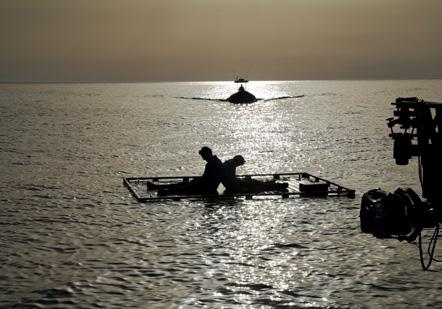
3. Public Broadcaster – This is inexistent in Malta. Abroad, in most finance structures of independent European films, one will see the involvement of a public broadcaster, for example, RAI for Italian films, ZDF in Germany, and BBC or Channel 4 for UK films. This works by having licence fees paid in advance that would help to make the film. The public broadcaster would then get the rights to screen it on their platform, thus creating content for the local public broadcaster. So if that happened here, maybe we would get a little more variety of content than we have now.
From a financial point of view, Malta needs to bolster the funding available to local producers. Suppose Malta is compared to Iceland (two comparable islands in population size). In that case, Iceland has a fund of €10.3 million (compared to Malta’s €600,000) and produces, on average, 8 to 10 films a year. Iceland also has a thriving service industry due to its striking landscape and has been the backdrop for big films like Star Wars and James Bond, yet they focus heavily on their local film industry.
Malta is also negatively affected regarding distribution support, having no structures to support local filmmakers. A huge drawback is that, geographically, Malta stands alone; nevertheless, our institutions can create alliances with other countries. Iceland, for example, is alone in the Atlantic Ocean. Yet, it forms part of the Scandinavian network giving them an advantage because the Nordic countries collaborate, which is why we’ve seen so many good Scandinavian movies in the past 30 years.
“Much still needs to be done - from human resource development, talent development, like writing for example and nurturing other talents too, to having distribution support. We also need to focus on film education and audience development. Finally, we must be aware that we must work with others locally
and internationally to make it happen.”
Marketing the film industry
Concerning structures surrounding film, apart from the development stage, there is also the marketing stage – a hugely important aspect of ensuring the success of a film. Unfortunately, Malta no longer has a film festival to promote locally-produced films.
“We had a wonderful film festival – the Valletta Film Festival – growing in stature. We travel a lot and invest a lot of time, money and energy in attending film festivals, and we can see first-hand how they really help the local film industry. Moreover, they also greatly benefit the overall tourism industry. Considering the Cannes Film Festival, it’s common knowledge that the hotels will be full and the restaurants are fully booked. So, why did a local film festival doing so well not find the support it needed to grow? It would have helped the growth of both the film industry and the tourism industry and spilt over to other sectors, too, such as the boating and yachting sector, where boats could be chartered for meetings and parties like they do in Cannes. I quote Kenneth Farrugia from Bank of Valletta, who had said that the film industry could be for Malta, what the financial industry was in the ‘90s,” says Anika.
The last edition of the Valletta Film Festival was in 2019 after running for five years; however, the details of why it ended are blurry.
Nevertheless, both Pierre and Anika insist that the local film industry deserves a place in its own right, in our economic strategy, and not just as part of the tourism ecosystem.
“A lot of hard work goes into creative content that should be paid for and shouldn’t be given away for free. As filmmakers, this is not a hobby but our full-time job that brings in money to pay our bills. Unfortunately, Screen Malta hasn’t been announced yet, which means that we cannot plan and take necessary decisions. We have two projects that we are developing; however, we cannot plan for their funding.”
Film accolades
Despite, Falkun Films boycotting the local film awards earlier this year, they were undoubtedly vindicated with the accolades that Carmen received in Canada, as it took home the ‘Best Feature Award’ at the Canadian Film Festival, ‘Best of Show Award’ at the Female Eye Festival (equivalent to the Best Film award), and it also won the Cinematography Award at the Whistler Film Festival in Canada. In addition, it is also the first ever local production company to have its films selected for the Toronto International Film Festival (TIFF).
“We have a lot of talent here across the board – technical, creative, acting, crew. The issue is that it’s not being allowed to grow. It can grow through better collaboration amongst
ISSUE 73 MONEY16 FILM
filmmakers themselves, and with the relevant authorities and stakeholders sitting down at the table at the same time to listen to a collective voice, rather than just listening to individuals.”
“The first time we saw this happen, which was very inspiring, was during Film Week in January 2022. We need to see more of that. Rather than taking the paternal approach of ‘we know best’, we urge the authorities in question to sit down with those who actually have skin in the game, with those who actually depend on the industry for growth.”
What lies in Falkun Films’ future?
We have another project that will come out soon, which is a co-production with Germany called The Dive, and it’s a story about two sisters. When we read the script, it was such a page-turner that we both immediately said yes. It’s an adrenaline-rush adventure story, a different film altogether yet again, from War Sailor and Carmen.
“When we choose to get involved in a production, it’s about whether the story speaks to us, and also about the partners because it’s almost like marriage since you have worked with them for so many years! So, these are all important aspects to consider when deciding what film to produce.”
“Our focus is making stories that matter. There are only so many stories that we can dedicate time and energy to, as we also have two young children, and they need our time too. So, we must be selective about the productions we choose to be involved with. We make films that resonate with us, that we feel have an impact. Both Carmen and War Sailor do that, albeit on different levels. Carmen is a lighter film; it’s been called a crowd-pleaser, but there is a lot more to it than meets the eye, and it’s really up to the audience to take back from it what they want. In comparison, War Sailor is an anti-war movie. It’s about the impact of war on human lives. Regular people who are just trying to make a living and care for their families, and how war can destroy everything.”
Carmen is due to be released to the public on the 21st September at Citadel Cinema in Gozo, and on the 5th October 2022 at the Eden Cinemas, while War Sailor will be released later in the year, so film buffs have a treat to look forward to.

MONEY THE DESIGN, CREATIVITY & ARTS EDITION 17 FILM
GREENING PROMISES:
During the electoral campaign of 2022, the Labour Party promised a €700 million investment over seven years to create green spaces in urban areas. Giselle Borg Olivier speaks to Prof. Alex Torpiano in his capacity as Dean and Head of the Department of Architecture & Urban Design to get his views on this undertaking.

FANTASTIC OR FANTASY?
The promise was that this investment would create “a network of gardens and open spaces”, including parks, urban green reclamation projects, urban greening initiatives, underground parking where possible, and green areas spread out over car tunnels and car-free areas in different localities.
In your capacity as Dean and Head of the Department of Architecture and Urban Design, what projects do the Maltese islands require to fulfil this promise?
Let us first look at the text of this promise. “A network of gardens and open spaces, including parks, urban green reclamation projects, and
urban greening initiatives.” This sounds great, but it seems as if there is an underlying vision of a network of parks linked together by landscaped “corridors”, which would encourage people to walk or jog from one place to the other.
Various entities have floated this vision a couple of times before, and it is good that it has reached the stage of a political commitment. However, the text challenges the vision’s integrity: “underground parking where possible, green areas spread over car tunnels...” The persisting reference to cars is worrying because it suggests that the “green areas spread out over” car infrastructure are nothing but a sop to Cerberus.
ISSUE 73 MONEY18 URBAN DESIGN
First, we must acknowledge that green areas laid out over large-scale concrete structures are not the same as natural landscaped areas. For example, have deep soil areas and space for root development, facilitate stormwater management and aquifer recharging, etc.
Secondly, the cost of car infrastructure is not trivial, and I would argue that such car infrastructure would absorb at least half of the budgeted amount, so that, strictly speaking, this would be a supplement to the €700 million already spent on road/car infrastructure.
Let’s look at the project to pedestrianise St Anne Street in Floriana—how much of the necessary investment would be required to create tunnels under the street? And how much to the greening of the surface? Would it not be wiser to study how (i) we could reduce private vehicular traffic, and (ii) traffic could be re-routed with more minor infrastructural requirements rather than through expensive tunnels? The continued blind belief in underground car parks also promises additional and enormous volumes of excavation waste. Perhaps, automated mechanised above-ground car parking could be a better solution – but they should not fund car parks from this €700 million.
So more than endorsing “a type of project”, I would like to see a genuinely holistic vision which proposes to change the landscape (including the urban landscape) of Malta and Gozo to an overall greener, healthier one. One important step would be to change our spatial planning model completely, for example, to embrace landscape planning.
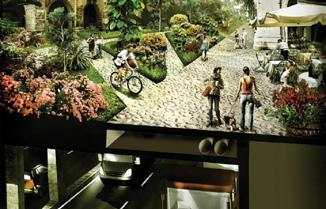
The Maltese population has long discussed the need for green open spaces. How and where do you envisage that the government should spend the money?
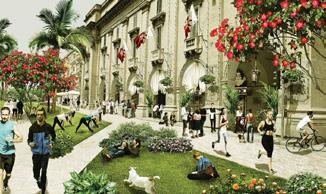
In my opinion, it is not a question of spending money on projects but of an overarching vision to which all relative policies, such as spatial planning policies, agricultural policies, tourism policies, economic development policies, industrial policies, and so on, would be subservient. I have already referred to the need for proper landscape plans for Malta. However, we also need some basic ground rules on what constitutes good urban greening, what does not, and how to integrate green infrastructure into urban areas. Green infrastructure is not about putting potted plants in public areas but about integrating public infrastructures, such as stormwater drainage, lighting, landscaping, and
It is no use having (a strong) economy without a clean planet.
Underground roadways
pedestrian pavements; it is about encouraging people to walk rather than drive. It encourages bio-diversity, even in the heart of our most highly urbanised areas.
Indeed, we must measure private and especially public projects against internationally established biodiversity standards as part of the development permitting process. We should bring trees back to our urban streets and our urban open spaces (and to our front gardens!) Every area of soil covered by development demands at least an equivalent area be created to compensate for the loss, even if it is a green area on the roof.
With such an investment being put towards the environment. What do you say when virgin pieces of land are given to developers?
These contradictions are precisely the point; unless there is a holistic over-arching vision, the individual “projects” promoted by so-called pro-environment policies risk being contradicted by the other, more numerous, anti-environment policies that claim to promote economic life.Even though there is a lot of talk about balancing economic development with protecting the environment, the pro-environment still plays second fiddle in political mindsets.
I was shocked to hear an EU director-general for the internal market, industry, entrepreneurship, and tourism state that “it is not useful to have a clean planet without an economy.” I would have expected that, with all the EU talk about the Green Deal, greening the economy, etc., the actual statement from an EU official should have been, “it is no use having (a strong) economy without a clean planet.” This is precisely the problem with the current politics of pro-environment projects. They are seen from the point of view of GDP contribution, not well-being in its broader meaning.
MONEY THE DESIGN, CREATIVITY & ARTS EDITION 19 URBAN DESIGN
»
Pedestrianised St Anne Street in Floriana
A group of NGOs listed 12 demands they believe should be addressed as part of this investment. How can they ensure that the government will listen to them and address these concerns?
Before the last election, a group of NGOs published a statement sent to all competing political parties to try to push forward a logic in favour of the quality of our environment and away from the ubiquitous manifestos composed of a series of disjointed and sometimes contradictory “proposals”.
I believe we had nine key themes, ranging from the promotion of biodiversity to the enhancement of wildlife protection, from the protection and management of the sea to the enhanced protection of rural areas, from better governance in planning processes to putting the brakes on land reclamation.
Within these themes, there were other sub-themes; the 12 demands you refer to were, in fact, sub-themes of the general themes of habitats, biodiversity, and marine areas; there were other sub-themes under the other main themes.
I do not think it is correct to refer to these as “demands” by eNGOs. We are not “demanding”; we are simply reminding politicians that if governments wish to boast of their credentials in favour of the wellbeing of every citizen and visitor, these themes need to be addressed.
As a special-interest lobby group, we are not asking for anything for ourselves. Instead, we are “asking” what needs to be done if a government wishes to be pro-environment. So, how can we ensure that the government will listen? If the government wishes to prioritise the environment, this should not be a difficult task. In truth, however, we cannot ensure anything; we must keep working to raise public awareness of the links between these themes and a better quality of life for everybody. Eventually, it must be the public making demands, in this sense, of their representatives.
NGOs are referring to these promises as “green-washing projects”. Do you think this is the case, or are these projects necessary to safeguard the environment?
We must reserve judgement on the validity and effectiveness of the proposed €700 million investment until the details of the proposals are made known. However, suppose the eNGOs applaud “green” projects
such as the enlargement of the Ta’ Qali National Park by constructing a 400-car underground car park and a massive public concert arena or by providing funds for putting bushes (and hopefully trees) within urban centres. At the same time, development within rural areas accelerates without any effort to control it. In that case, the government will find that eNGOs are critical.
We must reserve judgement on the validity and effectiveness of the proposed €700 million investment until the details of the proposals are made known. However, suppose the eNGOs applaud “green” projects such as the enlargement of the Ta’ Qali National Park by constructing a 400-car underground car park and a massive public concert arena or by providing funds for putting bushes (and hopefully trees) within urban centres. At the same time, development within rural areas accelerates without any effort to control it. In that case, the government will find that eNGOs are critical.

As pointed out earlier, an actual pro-environment government bias – which is, after all, in the interest of everybody – requires a holistic approach and not a series of projects intended to “offset” €700 million of road infrastructure during the previous seven years. Therefore, the whole mentality of government, particularly planning, must change.
NGOs have also said, “Spending €700m on urban gardens does not safeguard natural habitats.” So, are these urban gardens simply compensating for the loss of natural land?
I do not know whether urban gardens are conceived as compensation for the loss of natural land. If that is the intention, the situation would be tragic. One needs urban gardens, of course, but in terms of biodiversity, natural habitat, and amenity for the inhabitants of this country, urban gardens cannot compensate for the continuing degradation of natural land. On the other hand, suppose the intention is to compensate for the damage done and the ongoing onslaught on natural rural areas. In that case, the projects are bound to fail, and the whole €700 million proposal will also be an expensive exercise in self-delusion.

ISSUE 73 MONEY20 URBAN DESIGN
Robert Abela promises €700 million investment in urban ‘green lungs’
The project to pedestrianise St Anne Street in Floriana
a springboard for local tech companies
elevating
enjoys
Tech.mt
local
assisting

POWERED BY
Techmag supports
in
the
tech industry to new heights by building on the strengths it
and
tech companies in succeeding by supporting their products and services in Malta and abroad. NEXT EDITION NOVEMBER 2022 READ ONLINE In association with Interested in advertising? hello@bemags.com
WHEN UGLINESS BECOMES NORMALISED... THEATRE SPEAKS
Lyndsey Grima talks to Herman Grech , Luke Saydon , and Marta Vella , three playwrights responsible for producing moving productions meant to challenge the audience and the world we live in.
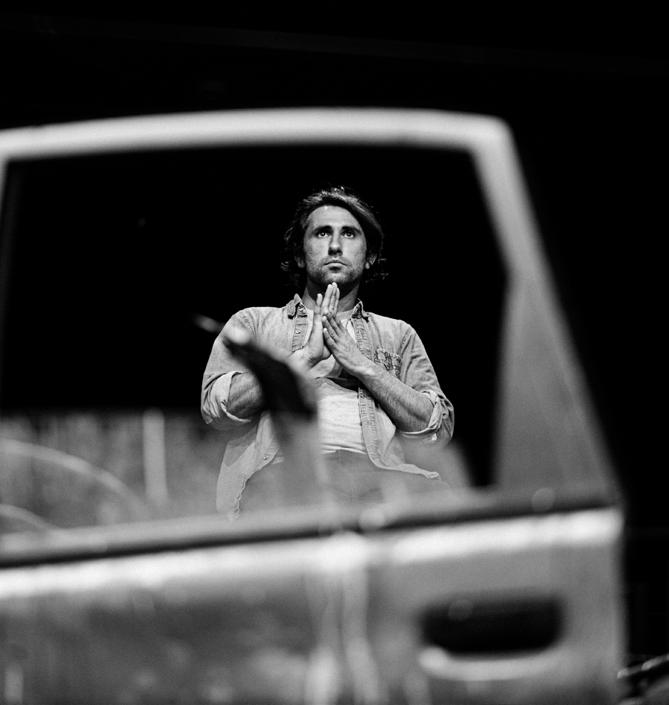
Throughout history, people have used art as a form of communication.
Think of the early cave art of Egyptian hieroglyphics. Art can explore concepts or ideas without needing written statements of any kind. Art can promote specific political viewpoints; artists worldwide have made drawings, paintings, and sculptures to challenge assumptions, support causes, and explore more profound and meaningful questions. Art can explore broad ideas or themes, some more obvious than others, and art often reflects on the time in which it was created, whether
acting as a statement of support or a reaction against something.
Although locally, we’re moving forward in more ways than one, we are still stuck or, dare I say, moving ten steps backwards (to say the least) on many issues, shining the spotlight on corruption, gender identity, and abortion. Three incredible theatre productions, currently happening locally and abroad, deal with these exact issues; They Blew Her Up, ItTeatru tal-Miskin, and Blanket Ban, respectively.
ISSUE 73 MONEY22 THEATRE
THEY BLEW HER UP
They Blew Her Up by co-producer, playwright, and director Herman Grech deals with the assassination of Daphne Caruana Galizia, the attempted cover-up, and the subsequent political fallout. The idea was conceived in November 2019, when the case started unravelling and the main suspects were rounded up. Since Herman is also an editor and a journalist, he had privileged access to sources and contacts and the gripping court testimony, which helped shape the script. He built it around five characters—Daphne’s son, an informer, a police investigator, a journalist, and the criminal element.
What inspired the production of the play?
I started writing the play in early 2020 when all the interviews and dramatic events were still fresh in my mind. It was initially a jigsaw puzzle of words, anecdotes, and images, and the transition of the script was quite challenging. I kept rewriting parts until opening night, especially since we were here dealing with an ongoing case. However, it finally came together with the help of five of the finest actors in Malta. We staged the play in Malta in February 2021 before COVID-19 restrictions shut down our last five performances. We went on to perform it in Brussels to critical acclaim last May, and we are heading to perform it at the International Journalism Festival in Ferrara, Italy, in October. Two weeks later, we will stage the play again in Malta for the fifth anniversary of the assassination.
What was the most challenging aspect of bringing this play to life?
It was easy to turn the play into simply an adulation of the central character/victim. Instead, I wanted to give a realistic picture of Daphne Caruana Galizia by emphasising her writing and investigative skills and her more unsavoury characteristics. I also wanted to convey the message that a “system” killed her and not just one person. But, of course, I was also aware that I was dealing with a play where the facts around the case were, and are, still evolving, and therefore I was walking on legal eggshells.
What can the audience expect from the play?
The play is told through the eyes of the five characters, and several parts are verbatim. It is introspective, gripping, shamelessly political and quite horrific in parts of the narrative. I hope people walk out of the theatre challenging their preconceptions. Theatre has a duty to challenge you and leave you questioning.
What are you hoping to accomplish with the play?
In Malta, we tend to think in terms of black and white, never bothering to explore shades of grey. I wanted us to challenge our tendency to label everything, sometimes with no notion of critical thinking. If you’re critical of the government, you’re branded a ‘Nationalist’; if you don’t like
loud petards or hunting, then you’re branded ‘anti-tradition’; if you don’t scratch someone’s back, then you’re blamed for not conforming to the ‘system’. I also wanted to ensure that we do not forget one of the most despicable crimes of our generation. We tend to get accustomed to all the ugliness around us—from Donald Trump to Brexit, to COVID-19, to the Russian invasion of Ukraine. And as a result, such ugliness becomes normalised. There’s a line in the play attributed to Daphne’s son which goes: “I know the narrative they’re going to use from now on: let’s start a new chapter without Daphne.” We can’t let that happen. »
What will the audience think about in the car as they drive home after the show?
I would like all of us to take a good look at the ugly world we created in this place called ‘home’, be it rampant construction or institutionalised corruption and nepotism. I want people to reflect on how we’ve sold our values and history at the altar of greed, how corruption has spiralled so out of control that someone ordered the spectacular assassination of a journalist, a woman, and a mother in broad daylight. I want the audience to understand the crucial role of independent journalism –and, more importantly, the duty to speak out and protest when faced with wrongdoing. »
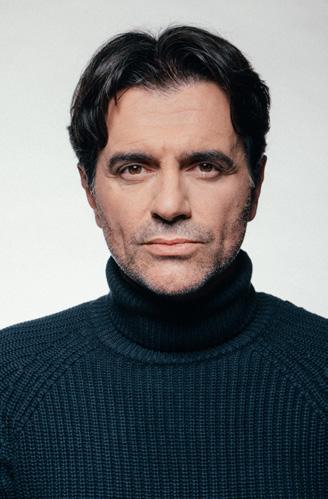
MONEY THE DESIGN, CREATIVITY & ARTS EDITION 23 THEATRE
I want to convey the message that a “system” killed her and not just one person.
Herman Grech
IT-TEATRU TAL-MISKIN
It-Teatru tal-Miskin is a new Maltese musical premiering at the brandnew theatre space Aurora Black Box between the 23rd and 25th of September. The play will be held in Spazju Kreattiv between the 30th and 2nd of October. It’s a queer coming-of-age story about people’s innate fear of the ‘other’, inspired by acts of intolerance in Maltese history. It is written by Luke Saydon, directed by Denise Mulholland, with a movement by Ruth Borg and starring Thomas Camilleri, Chiara Hyzler, and Sean Borg. With an accompanying outreach programme, it aims to be a catalyst for the shifting landscape of LGBTQ+ visibility and acceptance in our country.

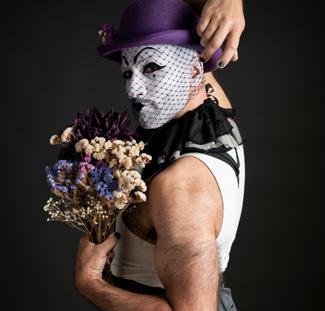
What inspired the production of the play?
The idea had been sitting in my brain for several years, but the official writing process started during the pandemic. I had more time on my hands than I was used to and found myself being more present on social media – which led me to one of the scariest online places – the comment sections. In a time of urgent need for kindness and support, hate speech was still present. It was mind-boggling. With everything going on at the time, how could people still be unkind to one another? That is when the story and the need for it began to materialise. At a time when the theatre was utterly dormant, I formulated the most exciting new piece of theatrical work in my head. I wanted to explore this intolerance, what perpetuates it, and if we as a country define or experience intolerance differently than others. Finally, I wanted to write about its dangers and hope once eliminated.
What was the most challenging aspect of bringing this play to life?
Like any other writer, a piece of myself inevitably lives in the characters and their words. Still, there is a further responsibility when the piece represents a community far more significant than yourself. The experience of growing up queer in our country redefines itself with every generation, and an incredible challenge was the task of representing all of these experiences, not necessarily just my own. We
engaged in so much groundwork, research, and consultations with the community to ensure that we delivered the most authentic story that champions queer visibility and acceptance.
What can the audience expect from the play?
The Teatru tal-Miskin experience hopes to be equally entertaining as it should be eye-opening and revealing. The production does not shy away from the work that must be done to ensure that a queer person in our country can feel accepted and loved without barriers. Our entire project aims to start conversations, spark questions, and bring the audience face-to-face with the realities of an unaccepting community.
What are you hoping to accomplish with the play?
Even though our overarching mission is to change lives and start new conversations about queer visibility, at the end of the day, we are a theatre company. We hope to accomplish something beautiful that can move and connect with people, something that can give our audiences an emotional reaction that only a new piece of theatre can offer.
A resonance that only an authentic piece of work can provide. Beauty is what we hope to accomplish.
What will the audience think about in the car as they drive home after the show?
Firstly, I hope that the tunes and musical motifs of the show (quite frustratingly) stay in the audience’s heads (every composer’s cheeky wish). Then, I hope they start thinking about people who have had similar experiences to our “miskin”. People who have been wrongly treated by our societal framework and have been forced to make do without the one thing that provides fulfilment. Lastly, I hope that urgency is sparked in doing something about it, ensuring that no community member feels ostracised or forced to settle for anything less than being precisely what they want to be.
ISSUE 73 MONEY24 THEATRE
Luke Saydon and the cast of It-Teatru tal-Miskin
BLANKET BAN
Blanket Ban is a theatrical production written by Marta Vella and Davinia Hamilton that resulted from many interviews and research the two writers conducted over the last few years. The production investigates Malta’s blanket ban on abortion, the what, the how, and the why. And they both put themselves and their processes into the play.

What inspired the production of the play?
We started working on the show in 2019. When the pandemic hit, we kept conducting our interviews, most of which happened whilst in lockdown in 2020 and 2021. We finalised the final draft of the script early this year.
What was the most challenging aspect of bringing this play to life?

It’s a highly ambitious show, so we’ve faced many technical challenges. Doing a show ‘post-pandemic’ isn’t easy either. COVID-19 is still a disturbance, so you have to push through.
What can the audience expect from the play?

I’ll tell you what they wouldn’t expect - a lot of humour! The subject is
very heavy and upsetting, so it was essential for us to lighten things up and find an entertaining way of doing the show.
What are you hoping to accomplish with the play?
We want to raise awareness and shed a spotlight on the situation in Malta. Give a voice to those unheard. Unsurprisingly, it is something few people are aware of. As artists, this is also our form of activism.

What will the audience think about in the car as they drive home after the show?
I hope they will be moved by what they see and remember that rights are not to be taken for granted. They can be taken away at any time.
MONEY THE DESIGN, CREATIVITY & ARTS EDITION 25 THEATRE
I’ll tell you what they wouldn’t expecta lot of humour!
Marta Vella
ART SELLING ART THAT MATTERS
We Art Love is an e-commerce platform that sells art with a cause. It exists to generate widespread awareness and financial support. MONEY spoke with the founders, Josh O’Cock and Georgia Star Reed , about their mission.

Together, we can make the world a better place.
Josh was inspired by a dream several years ago that would enable his fiancé and him to do more than sponsor three needy children. He quickly sketched out the dream on his notepad, and after a year of planning and a mission trip to Boracay, the We Art Love platform was born—combining art and e-commerce to raise awareness and financial support for those in desperate need.
“There are certain things most entrepreneurs won’t talk about as it is not cool compared to winning awards and breaking records. Here’s one. Over the past seven years, I’ve burned out twice due to stress and pressure. The second time was nastier than the first. This experience has taught me that there is so much more to life than money. Life is too short to burn out, striving to get rich enough to one day consider philanthropy. I’ve flipped this model on its head by sustainably using my skills to help make the world better. When passion is involved, it doesn’t feel like work.” says Josh.
Every piece has a purpose
The first We Art Love project to be launched on the platform is “Ati Hearts,” featuring internationally known artist Christian Palmer’s theme of togetherness and community. The Ati children produced their own individual little hearts, from which the artist created three gigantic heart collages expressing the love within the community. This wonderful tryptic collection is available online as prints on www.weartlove.com. In addition, there are three colourway editions of the Ati Heart, each with a different focus – health, nutrition, and education. All profits from every purchase go directly towards caring for, feeding, and educating children in the Ati Tribe. It’s astonishing how much positive change a €120 purchase of this art will have on their lives.
Mission of Love
The Mission of Love was set up in 1992 by Patrick and Maria O’Cock (Josh’s parents) to run a sponsorship programme. The €25 per month covers food and education for the child you sponsor. There is a separate fund for medical bills and emergencies. The cost of living is increasing, and not everyone there is blessed with a sponsor. Ati Hearts is connected to the Mission of Love as its cause of choice. Watch the video documentary (bit.ly/BuyArtSaveLives) to get a feel for the mission and this project.
“Trying to follow in my father’s footsteps would be setting myself up for unrealistic expectations. I’ve never met a man more kind and caring. He is a total legend. However, my career, particularly since starting Growth Gurus in 2015, has developed a strong skillset that I love to use to initiate scalable change and positive impact. We Art Love is exactly this,” concludes Josh.
The vision
The vision has grown, and Josh and Georgia are now opening the We Art Love digital infrastructure to become a platform for other visionaries and artists to give love and much-needed funds to causes close to their hearts. At least five new projects are already planned to be added to the platform over the next 12 months. So, if you want to be part of this vision, reach out. Together, we can make the world a better place.
ISSUE 73 MONEY26
Josh O’Cock thanking Nathan Charlesworth (renowned real-estate professional) for purchasing a print for every client he sells a home to
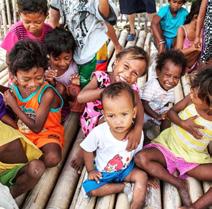

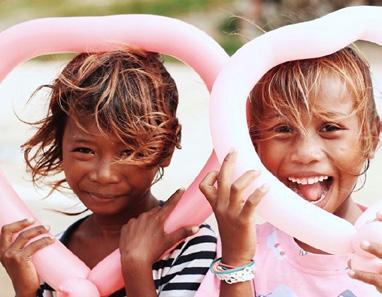

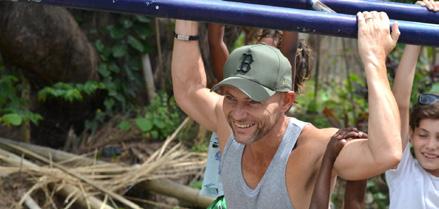

MONEY THE DESIGN, CREATIVITY & ARTS EDITION 27 ART
Chris Palmer
Maria and Patrick O’Cock
Josh O’Cock and Georgia Star Reed
Josh in Boracay as a kid and again in 2020
GREENING MALTA’S CONCRETE ROOFTOPS
Malta is Europe’s most concreted-over country. Can government funds and garden activists like Piscopo help to regreen Malta and move away from our “concrete jungle” status? asks Lea Hogg.
With just over 7.5m2 of greenery per capita and only 3.5km2 of forested areas, Malta has the least green areas and ranks as the 3rd most environmentally costly country in Europe. Valetta fares even worse, placing last out of 38 European cities for overall green space.
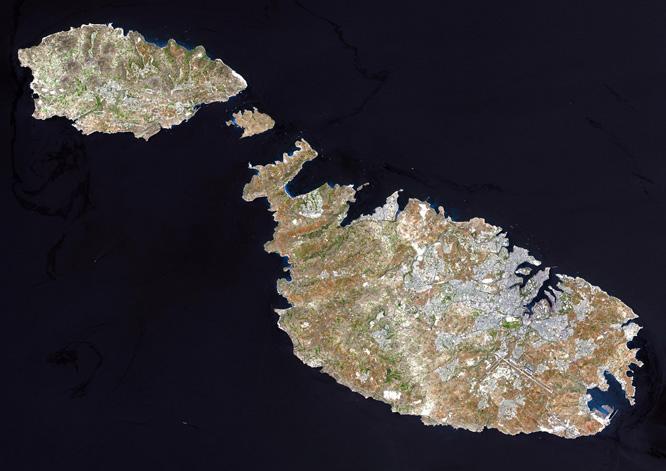
In May, President Vella committed to making the environment the government’s “primary objective” and pledged to invest €700m over five years. But environmental NGOs are sceptical about how the money will be invested and doubt that it will be enough to compensate for the damage already caused. Astrid Vella, the coordinator of the NGO Flimkien ghal Ambjent Ahjar, believes “It is too little, too late”, arguing that while the government talks about creating green spaces in urban areas, there is not much “space” left to work with.
Mark Twain quipped, “Buy land—they are not making it anymore.” With land and property prices rising inexorably, international banker
ISSUE 73 MONEY28
GREENING
25% of Malta is now covered by buildings making it the most concreted-over country in Europe
and consultant Paul Bonella argues that the over-development of Malta’s ultra-scarce land has reduced the countryside to back and front gardens. But when developers can charge over €3000 per m2 for an apartment, it is not surprising that even Malta’s townhouses and gardens are disappearing at an alarming rate.
The government launched a €2 million green initiative grant scheme to create greener places to live in. Up to €10,000 was available for private residences, apartments, shops, and offices with frontage or balconies overlooking a public street or space to introduce green facades or walls or retrofit front gardens. The PA’s executive council chairperson, Martin Saliba, introduced the scheme and stated, “By supporting property owners, we are directly and positively addressing climate change, public health, biodiversity, and community cohesion.”
Aaron Farrugia, Environment and Planning Minister, supported the scheme, saying, “Studies show that green infrastructure can substantially mitigate the adverse impacts that urbanisation and densely populated areas have on the environment, resulting in better air quality, water management, and biodiversity protection.”
With greener streets and buildings’ apparent benefits, the public, environmentalists, and the tourism industry continue to lobby for more government green grants. However, with only 140 applications approved at less than 0.3% of the President’s €700m environment improvement budget, Astrid Vella’s scepticism regarding the government’s commitment to a greener Malta may be well-founded. While take-up of grants was slow to build, partly due to a lack of awareness and a scarcity of expert consultants to advise applicants, the scheme was oversubscribed and closed in May after a one-month extension. The PA stated that there was no plan at present for additional schemes.
But, grants or not, Vinny Piscopo of Piscopo Garden Centres told Lea Hogg that rooftop and vertical gardens are excellent investments for property owners. Affordable and easily installed, outdoor “rooms” created with vertical gardens and greenery will enhance even the smallest space. And roof and vertical gardens don’t just look good; apart from their aesthetic quality, green walls can help reduce
noise and are thought to absorb over 40% more sound than a traditional façade. They are also suitable for us and the planet as they help to reduce the carbon footprint of a building
by filtering pollutants and carbon dioxide, improving air quality. In addition, green walls insulate buildings from temperature fluctuations, using evapotranspiration to help
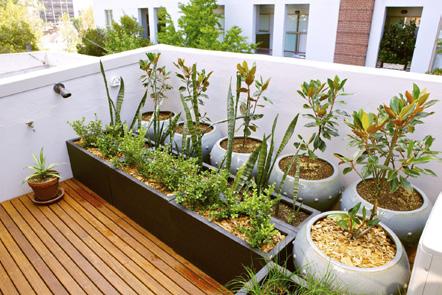
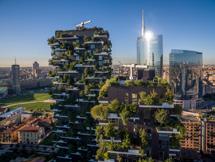
cool the air around them. Finally, unlike brick and concrete walls, green surfaces don’t store the sun’s energy in the daytime and release it at night in the same way.
Simple green walls can be achieved by “direct greening,” where climbing plants use the substrate of the façade for support and nutrition. Living wall systems can also be constructed by using planter boxes and plants that do not need to be climbing varieties. »

MONEY THE DESIGN, CREATIVITY & ARTS EDITION 29
GREENING
Milan’s high-rise Vertical Forest
Green walls can be made to fit any space and are an excellent alternative to potted plants that take up space on your patio or balcony.
Since 2010, Copenhagen has required green roofs on all new commercial buildings with a roof slope of fewer than 30 degrees. San Francisco requires up to 30% of roof space on new buildings to incorporate green roofs. New York requires that green roofs be incorporated into newly constructed buildings.
Asked if the government is considering regulations on green roofs, Piscopo says that while “trials have been done to establish the impact on buildings and to determine which
year. “It wouldn’t make sense to have a green roof that’s only at its maximum capacity for half the year. What’s the point of having a bicycle with just one wheel?”
Studies have shown that green roofs in seasonally hot and dry climates should be planted with high-leaf-succession species on substrates that hold water well. Succulents are great plants for vertical gardens. You can mould them to fit any shape and space, giving them a terrific aesthetic. Succulents are easy to maintain, require less water, and are colourful and space-efficient.
Asked if gardens that need artificial irrigation put a strain on the sustainability of water
to survive summer. Piscopo especially warns “when there could be a real lack of decent quality water on the island in the hot season.”
Piscopo has also seen increased customer demand for productive areas on rooftops.
“Growing herbs, peppers, tomatoes, etc. has become a requirement as people prefer plants that they can get something out of and that give them the satisfaction of having grown something themselves.”

And with a typical green roof comprised of several layers, including a waterproof membrane, a root barrier, a drainage layer, and a growing medium, Piscopo agrees that this could sound daunting to clients but adds, “The membrane needs to be done to ensure
We should be able to see green when landing in Malta and not just concrete.
Vinny Piscopo
plants thrive best, the government should make it a requirement for green roofs to be part of new construction projects to ensure less energy consumption and improve air quality in congested areas.”
However, green roofs need annual precipitation of more than 650mm. Malta’s average yearly rainfall is 600mm and is below 50mm per month for six months of the year. Piscopo’s advice is that it’s imperative that the setup and maintenance of a roof garden are of the highest standards and should not be reliant on rainfall. “Not every plant would do well in Malta, but there are many indigenous trees that can endure our climate,” Piscopo recommends, adding that roof gardens are planned to look great 365 days a
resources, Piscopo counters, “We live on a water-scarce island that floods when it rains, and we don’t catch enough rainwater, so instead of every building having a pool when we have beaches around us, we should instead use water for our gardens. In addition, gardens should be a requirement for all buildings, and every available roof should be turned green. Instead, front and back gardens have been sacrificed for construction. Let’s take gardens up to the roof so our properties can still have a green footprint.”
The use of drought-tolerant plants is a good option. When designing a roof garden, Piscopo says it’s crucial to keep our rooftop water reservoir capacity in mind and understand the amount of water needed by each plant
no water leaks into the building. Also, plants’ roots are a network and the plant’s life source, so you need an anti-rooting membrane so that we limit where the roots can wander off to and don’t damage the actual building.” “But don’t be put off; consult an expert and get gardening,” says Piscopo. “We should be able to see green when landing in Malta and not just concrete.”
With so many options and expert advice on hand, there is no better time to add greenery to your property and stop Malta’s decline towards “concrete jungle” status. Green roofs and vertical gardens are achievable, affordable, unquestionably desirable, and essential for a better quality of life for all of us.
ISSUE 73 MONEY30
GREENING
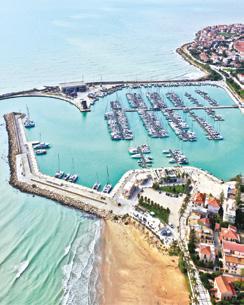


SUMMER 22 Marina di ragusa PETER VALENTINO EXPLORES THE BIRŻEBBUĠA SAILING CLUB AND ITS SUCCESSES INSIDER TIPS, STAR ITINERARIES, AND HAND PICKED RECOMMENDATIONS IN THE MEDITERRANEAN RUSSIAN AND BELARUSIAN SAILORS HAVE BEEN BANNED. IS IT FAIR FOR THOSE WHO HAVE ESCAPED THE REGIME? it's a dna. thing suMMer's hottest charter destinations Let theM saiL, race, integrate 12 8 18 COVER STORY14 LYNDSEY GRIMA UNCOVERS WHY MARINA DI RAGUSA IS THE BEST SPOT FOR YOUR SAILING VACATION THE NEW AND IMPROVED PORT OF SUMMER 2022 ISSUE 28 THE DEFINITIVE BOATS AND YACHTING MAGAZINE MALTA’S DEFINITIVE BOATS AND YACHTING MAGAZINE. POWERED BY Follow us on NOVEMBER2022 ROLEXMIDDLE SEARACEEDITION Informative and exclusive content, high profile interviews, sailing destinations and lifestyle. Available at all marinas, affiliated businesses, Embassies, 5-star boutique/hotels and sailing clubs. Read on bemags.com
THE FUTURE IS NOW.
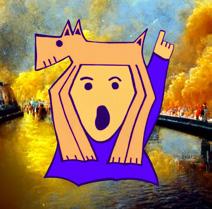
Mind-boggling! These are the two words Claude Camilleri , NFT artist and co-founder of Miloman NFT Hub, would use to describe the current state of opportunities for designers, creatives, and artists alike.
“Today, we can teleport ourselves around the world through holograms; we can word prompt AI to generate images; we can design 2D objects in 3D and get them printed. We can experience multiple realities through virtual and augmented reality. Rewind a decade. Without WEB 3.0, creatives would generally focus on a given skill. Maybe they would cross into other territories, but none like what’s available today, and this is just the tip of the iceberg. Multi-dimensional integrations are being adapted and used like never before. Open source platforms are giving coders the space to further their quests into building the unexpected through dialogue and skill. It’s exciting to see creatives pushing themselves into the depths of their creativity. The future is now,” says Claude Camilleri, NFT artist and co-founder of Miloman NFT Hub.

ISSUE 73 MONEY32 VISUAL ARTS
It’s exciting to see creatives pushing themselves into the depths of their creativity.
Photo by Federico Peltretti
“Imagine top-tier creatives in their respective disciplines whose work is as powerful as any master artisan in their genre. Whilst building the foundation of Miloman, a brand focused on NFTS and collaborations, I knew that a core group of these piers would be integral to this start-up brand’s continuous growth. The term “OG’s” refers to Miloman’s core group, the original crew, following a universal conspiracy to bind us all together as the founding members of our outstanding community. This is what the OG’s had to share on AI, Digital Arts, and NFTs.”
Design, creativity and the arts
“Creatives, designers, and artists should embrace technology as part of their tools for success; long gone are the days of absent resources for the few that lingered in nonimaginative quests for artistic fulfilment. Now we are part of big business like never before. Entrepreneurs in multiple industries are taking notice of the opportunities that lie ahead. Music, film, art, and the visual arts are intermingling and cross-pollinating like never before. This is the time to flourish, nurture, and expand into the realms of imagination and possibilities. Today, collaborations allow creatives to take their creations to higher levels. We can now convert a simple image into many formats. We can project onto objects that are not square or rectangular. Simple visuals can pave the way to more complicated realms like animations. Architect
designers can expand their professional cues to integrate with diverse creative platforms”, concludes Camilleri.
Kevin Busutill | AI NFT artist, Master Nivek/ Ministry Studios
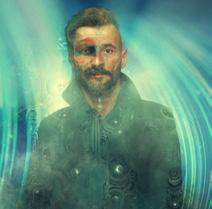

How do we define the time and space we live in? I feel we are in a Ren_AI_ssance. Technology is evolving at hyper speed, with AI becoming part of our everyday experience. Yet, beyond that, we see creative digital spaces opening up around us, extending the spaces our imagination can wonder and »

MONEY THE DESIGN, CREATIVITY & ARTS EDITION 33 VISUAL ARTS
create from. I feel that it is imperative that we creatively evolve and embrace the challenges that are being presented to us as individuals and as a race. This is the time to integrate, communicate, and express. If we truly want to cooperate with the functions of existence, 1+1=0_wonder.
Tunde Valiszka | Visual artist


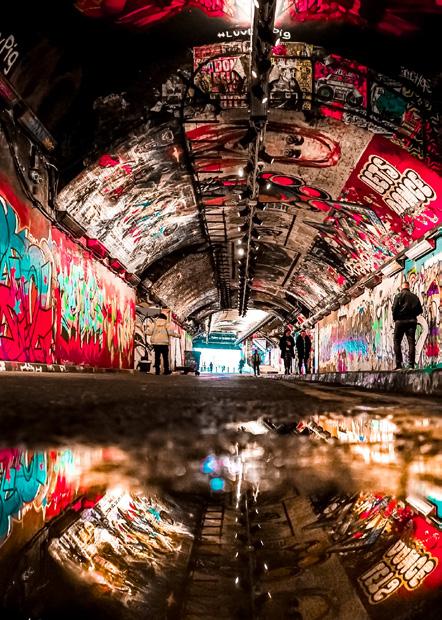

In today’s world, most art forms are digitalised. We use software and computers for music production, visual art, and photography.
Ten years ago, I would not have been able to create cinematic images like the ones I create today. And what is the future of digital art? Well, I believe it will become more significant than physical art, especially with the popularisation of NFTs. Art converted to digital assets is completely changing the art market. Furthermore, NFTs allow digital artists to monetise and authenticate their work. And needless to say, digital art will become more potent with the development of the metaverse and other Web3 spaces.
We can think of NFTs as a new form of currency and digital ownership for the most valued art of the 21st century. The most sought-after works of outstanding creativity, skill and profundity are fueled by powerful brands and active communities. The counter-culture
ISSUE 73 MONEY34
Jean-Paul Stivala | NFT Collector & Co-founder Miloman NFT Hub
VISUAL ARTS
is fascinated by the power of community and what is to come and is being treated to a spectacular art revolution powered by web3, artificial intelligence, and VR in highly anticipated metaverses. We are being treated to a wide range of new art genres embedded directly with non-fungible tokens. This renaissance includes avatars, wearables, collectables, gamified, one-of-one artworks, generative art, photography, music NFTs, profile picture collections, some pixelated and others even in 3D.
Zack Ritchie | Founder of CactiCrew, Ritch Design & Co-founder of NFT Club

Digital is the future. We spend most of our time on digital devices; why should we be limited to a rectangular screen? The metaverse and NFTs could be the chance to break from the norm to a fully immersive digital space. Today, we have
minimal hardware and software. Could you imagine if we had the right products such as smart glasses or contacts built to utilise their full potential?
When looking at digital art through the lens of value, it has been utilised for creating adverts, graphics communication, and games/ branding. No one would consider digital artwork on par with traditional art. You could duplicate a digital image easily. There is no way to track how many people copy-paste or have files. NFTs offer proof of ownership from the original creator and can be checked via the blockchain to see who created the artwork and where it has been passed on, bought and sold. Now, digital art can be seen on par with fine art paintings. They can be seen as digital assets to be utilised in 3D games, worlds, skins, and much more. I highly recommend it to anyone interested in the subject to do their research
and start exploring this exciting space.
If you want to get in touch with any of the above creatives, you may find Miloman OG’s on www.milomannfthub.com.


MONEY THE DESIGN, CREATIVITY & ARTS EDITION 35 VISUAL ARTS
Digital is the future. We spend most of our time on digital devices; why should we be limited to a rectangular screen?
PLACING ST JULIAN’S ON THE STREET ART MAP
MONEY met with the team behind the STJ Canvas, a project to beautify the island’s busiest tourist destination and motivate people to start maintaining their third-party walls.

ISSUE 73 MONEY36 ART
Inspired by street art across Europe’s major cities, STJ Canvas aims to create a space that encourages creativity. In an unprecedented move, the mural will be right in the middle of one of Malta’s main touristic centres, St Julian’s. Located on Forrest Street, the mural could become a key image in transforming Malta’s skyline.
“Having always loved the area and lived here since my youth, for long, I wanted to offer something back to Spinola and incorporate art into my surroundings, having been inspired by the endless street art across Europe’s major cities. So, after much thought, I decided on a mural down the side of the building.” STJ Canvas founder.
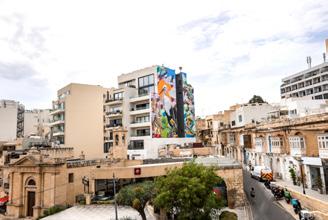
The competition
The founders launched a competition via their website, www.stjcanvas. com, to look for artists to put forward their vision. The remit was intrinsically local, preferably with a message, though they gave them free rein to incorporate whatever inspired them. The prize was their artwork on the wall and remuneration.
The online presence
STJ Canvas provided artists with a simple and helpful method to download materials for the party wall, understand the inspiration, and submit their works to the STJ Canvas committee through the website, which Growth Gurus developed. »
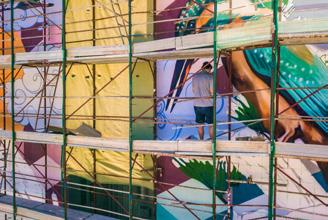

MONEY THE DESIGN, CREATIVITY & ARTS EDITION 37 ART
“Being particularly intrigued by the fusion of the physical and online worlds, the vision was to create an online experience that would enable artists to digitally create art on the wall. The initial purpose of the online presence was to attract artists to submit their visions through the competition. This has evolved to be the online home of the STJ Canvas.”
STJ Canvas Committee Member
The winner
The STJ Canvas panel chose James Micallef Grimaud as the winner. “In this mural, I took a more naturalistic approach and used some of the most colourful migratory birds that visit Malta yearly. Some of the birds I’ve chosen have also been spotted in St Julian’s valley and Pembroke. The birds include the Grey Heron, Eurasian Roller, Bee-eater, Kingfisher, and Goldfinch. I used birds featured in art nouveau creations due to their stylistic and classical features. I laid out the birds in the mural to create a flow and balance through colour,” explains Grimaud. “I used around 500 cans, including varnishes, and spent around 300 hours on it.”
I used around 500 cans, including varnishes, and spent around 300 hours...
“The juxtaposition of these birds with the modern development around the area will create a balance between nature and artificial structures through an artistic context. The pattern used in the background is reminiscent of the Maltese tiles and is a classic illusion.”
“I used a grid technique to create the mural due to the proximity to the wall while painting on the scaffolding and the problematic nature of climbing down ladders and walking to a certain vantage point every time I’d need to see the wall from a distance,” Grimaud concludes.
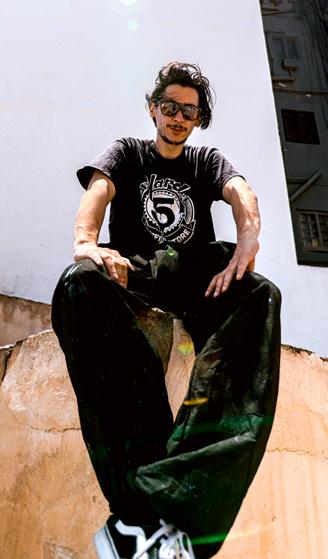
STJ Canvas board formed
Concept developed
The launch of the STJ Canvas
Competition
ISSUE 73 MONEY38 ART
2018 »
»
»
brand and website 2019 » Featured in local news » Competition applicants are starting to submit their work » International artist applications are received 2020 »
closed » The panel selected the winner of the competition » Final visuals concluded » Logistical planning » Planning Authority presentation 2021 » Planning Authority permit was granted (PA-07659/21) » 500 cans of spray paint were purchased » 9 stories of scaffolding were erected » The mural is protected with a covering sheet 2022 » The artist starts to work on the mural » Mural completed over 300 hours within 3 months » Protective layer applied » 26th September - scaffolding comes down » The STJ Canvas mural is revealed 2023... What's next?
MONEY
1. Take a peek at the first-ever BMW XM Designer: BMW
After teasing a concept in November, BMW has presented its all-new XM, the automaker’s first-ever performance vehicle with an electrified drive system. The XM is the first dedicated M vehicle since the ultra-exclusive M1 from the late 1970s, and it includes a plugin hybrid system with a V8 petrol engine and an electric motor.
The exterior is sharper than that of BMW’s other SUVs, with powerful contours, large kidney grilles, wide intakes, contour lighting, hexagonal twin tailpipes, and sharp split headlights, reflecting what the X8 would have been. An accent band runs down the body in an unfinished circle, spanning above the door handles and over the windshields, while the BMW emblem on the rear is conspicuously absent. The stock wheels are distinctive 21-

inch M light-alloy wheels, with 23-inch wheels available as an option. Drivers and passengers will find a spacious interior with specifically designed cushions, four-zone automatic climate control, a Harman Kardon surround sound system, and a prism-patterned headliner with 100 LED lights.


The hybrid powertrain produces 653 horsepower and a maximum total torque of 590 lb-ft., with 0 to 100 km/h timings reported at 4.3 seconds. Sport, hybrid, and electric cruising modes are available, with zero emissions at speeds up to 87 mph. Sounds composed by legendary composer Hans Zimmer will serve as a backtrack for the electric motor’s power delivery, with boost sounds accompanying the combustion engine.
Production will begin in December before arriving at dealers worldwide in spring 2023.

MONEY THE DESIGN, CREATIVITY & ARTS EDITION 39 PRODUCT DESIGN
»
’s pick from the world’s best designers. 1
2. The MINI gets the minimalist treatment Designer: Roman Ignatowski



Transportation designer Roman has created the MINI in its cool EV avatar as his personal study project. The car gets nifty alterations to change the perception of a classic four-wheeler completely. There’s a sense of airiness to the interiors, with the pillar size reduced and the sunroof more dynamic to liven things up. The headlamps and taillights get a more aggressive treatment to reinforce the aggressive stance. The same goes for the diamond-cut finish wheels that add to the edgy personality of the otherwise contoured EV.
Interiors get the same minimalist treatment, in line with the future trends dominated by lightcoloured spaces. The car’s dashboard gets the all-white treatment with a digital display for the telemetry. The central console is an extension of the dashboard and is minimal.
Finally, the iconic steering wheel of the MINI gets the most significant facelift in the shape of a yoke-style racing wheel. Those alone project the futuristic transformation of the MINI.
3. Vertical turntable Designer: Josh Schwefel
Basing the Blok on the choice of the Gen-Z, designer Josh Schwefel presents a turntable boasting mechanical looks with ultra-precise tolerance. That results in a device with a simple user interface and a clean silhouette. It is not the usual beefy device. Instead, a sleek square form factor with similar buttons and an enriching scroller knob for volume delivers a turntable worth your bedside table.
The turntable works as a vertical device, with the vinyl record going into the middle like a disc between the gaping lips of a DVD player. Understandably, the built-in spindle


identifies the record and begins to play it. A visually pleasing setup has connectivity ports on the back that do not interfere with the façade and render the device suitable for your lifestyle. We’re not sure if the Blok loves your smartphone, but Bluetooth connectivity allows the Blok to fill the void, permitting us to toggle the music from the comfort of the sofa or bed.
4. Vans Sim-Plis-Tech

Designer: Gabriel Pimentel
The design has a mesh inner bootie that lets your feet breathe and a water-resistant upper part. You also get velcro covers on the sides, a double zipper in the front, and boa lacing in the back. The outsole is inspired by the classic Vans waffle pattern but with a more modern look with a hex pattern in the areas that get the most wear and tear. You get a textured toe bumper to help you get more traction and a slash pocket on the side.
ISSUE 73 MONEY40 PRODUCT DESIGN
2 3
The renders show three different colours based on the original inspiration board. You get cool grey, deep blues, and earth tones, adding to the minimalist look the shoes are going for. Despite all the “features” mentioned, it still comes off as simple and stark, but also fashionable enough that you’d want to add it to your OOTD. Hopefully, the design will translate well to an actual pair of Sim-Plis-Tech shoes.
5. Polaroid ventures into Bluetooth speakers Designer: Polaroid



The four speakers in question are simply called P1, P2, P3, and P4. The basic name doesn’t at all mean that these music players are in any way inferior to the competition. On the contrary, the compact device is pairable with other speakers in the lineup for a more robust sound, and it can play music for up to 10 hours on a single charge. In addition, it
is the only device with an IPX5 waterproof rating, making it splash-resistant.
With 15 hours of playback time, P2 arrives in size roughly twice that of P1. So it is more powerful in comparison, but equally portable to take anywhere you like. The P3 has a polished metal handle for portability, unlike the wrist strap on the P2. The speakers are identical in shape, but this guy outpowers the P2 in output quality. The largest and loudest of the Polaroid speaker lineup, the P4 music player can fill the largest of rooms with sound.
6. The award-winning foldable smart guitar Designer: inDare Design Strategy



A winner of both the Red Dot Product Design and iF Design Awards, the U-Lab 001 isn’t your average guitar. Designed for novices with little formal training in guitar-playing, the U-Lab 001 provides the perfect launchpad for strumming, chords, finger-picking, and all-around musical
theory. For starters, it has an impressive folding design that allows it to occupy a third of its original space. Open it up, however, and the U-Lab 001 becomes a blank canvas for you to sonically paint on with your left and right hands. The right-hand rests on two rocker switches that emulate the act of strumming all or individual strings. At the same time, the fretboard under the left hand comes with a touch-sensitive light-up surface that teaches notes, chords, and general music theory, along with a companion smartphone app.
The U-Lab 001, an electronic device, also comes with a built-in speaker that plays back the audio, allowing you to listen in on your performance without needing an amp. A rotary knob above the speaker lets you control volume, and instead of tuning keys at the end of the fretboard, a single knob lets you change your guitar’s scale on command. There’s even a headphone jack built into the U-Lab 001 for silent jamming!
MONEY THE DESIGN, CREATIVITY & ARTS EDITION 41 PRODUCT DESIGN
4 6 5
Malta’s cultural gem
MONEY speaks to Joanne Sciberras, director of Library Operations and Head of Outreach at Malta Libraries, about its origin, historical archives, and outreach programmes.


What can you tell us about the origins of our National Library?
The National Library of Malta, situated in the heart of Valletta, is the heart and home of many gems of national and international importance. The building we stand in today holds various collections, such as books, journals, newspapers, manuscripts, and maps, to name a few. These holdings are significant not only for the history of the Maltese Islands but also for evaluating European and Mediterranean history. The library, which nowadays falls under the remit of the Malta Libraries entity, was founded as a public library during the last years of the Order of St. John of Jerusalem. The building is an elegant architectural jewel. It was the last significant building to be constructed by the Knights and among the most splendid, and its origin can be traced as far back as 1555, when all books in the legacy of deceased knights were to pass to the Common Treasury of the Order.
The building was officially inaugurated on 4th June 1812 by Sir Hildebrand Oakes, British Civil Commissioner to Malta. From then
on, the Malta Public Library, as it was then called, continued to flourish with several new acquisitions. In 1936, the library was granted the prefix “Royal” by King George V. The Royal Malta Library took over the custody of the Archives of the Order of St. John, which were transferred from the Public Registry premises. It was officially designated as the National Library of Malta in 1976, becoming the sole research and reference library as we know it today.
What would you say are the library’s most significant holdings?
The Archives of the Order of St. John of Jerusalem, Rhodes, and Malta are our pride and joy. These are documents produced and received by the Order’s Chancery from its origin to the end of its rule in Malta. After suffering a series of transfers from one repository to another, the approximately seven thousand volumes finally found a permanent abode here in 1937. One of the earliest surviving parchments and most treasured documents conserved in the archives is the bull issued by Pope Paschal II in 1113 in favour
ISSUE 73 MONEY42 BOOKS
Joanne Sciberras Photo by Brian Grech
of the Order. Another precious document is the Deed of Donation of the islands of Malta, Gozo, and Tripoli to the Order of St. John by Emperor Charles V in 1530.
However, the library also houses precious incunabula, manuscripts, maps and the ever-growing melitensia collection, which encompasses published material in the form of books, pamphlets, newspapers, journals and single-sheet items by Maltese authors, or on any subject related to the Maltese Islands.
Choosing favourites is next to impossible in such a vast library.
What cultural and outreach programmes does the national library offer?

The National Library of Malta serves researchers daily and has been revitalised considerably via its outreach initiatives in recent years. School visits, tourists, and guided tours see thousands per year come through our doors. In addition, we are open to film productions, concert organisers, book
readings, and launches. You name it. We also organise an annual themed exhibition highlighting collections in our care and a themed monthly public lecture series over the winter months. Upcoming appointments of note are Sunetti: Minn Fomm u Qalb il-Poplu, an exhibition which opens at the National Library on 4th November 2022 till the end of December and travels to the Ministry of Gozo in Victoria for a month starting 3rd February 2023; and Created to Inspire: 500 years of artistic splendour in Malta – a monthly and free public lecture series with eminent historians, restorers and artists starting in mid-November 2022.
What are some ways that people can support or invest in the national library?

First, one can choose to support the National Library by donating. The upkeep of such precious collections and the space itself could always do with additional injections. One may choose to sponsor a conservation project, for example, and we have had some very fruitful collaborations along these lines in the past. Another way of investing in the National
Library is by bequeathing your collection to future generations—which is one way our in-house historians have often managed to fill gaps in collections that have been amassed over thousands of years. Moreover, on-site volunteering opportunities open from time to time. Hence, we encourage individuals, teams, companies, etc., to keep an eye out for updates on this front and to get in touch with us to discuss further.
How can the public support and follow the national library?
Follow us on Malta Libraries, the National Library of Malta’s Facebook page, and our Instagram account, @malta_libraries. To receive updates about events and initiatives, we suggest you join our events database by emailing us at events.library@gov.mt. To purchase our publications, set a research appointment, or if you are interested in organising a tour or an event at the National Library, email us at customercare.nlm@ gov.mt. Everyone is welcome to visit during library opening hours; we cannot recommend it enough.
The Deed of Donation of the islands of Malta, Gozo, and Tripoli to the Order of St. John by Emperor Charles V in 1530


MONEY THE DESIGN, CREATIVITY & ARTS EDITION 43 BOOKS
The Archives of the Order of St. John of Jerusalem, Rhodes, and Malta are our pride and joy.
Aquisition letter by Grand Master Ximenes
MONETARY TIGHTENING IN AN ECONOMIC TURMOIL SCENARIO
Jordan Portelli believes we have reached a tipping point, as irresponsible actions can shift the economy from a desired soft landing to unfavourable territory.

Over a decade, the economy has experienced a wave of accommodative monetary policies to combat slowing economic growth, which major central banks implemented at a robust pace. In simplistic terms, monetary policies are a set of actions that control an economy’s money supply. They can take place in various forms, the most well-known being the manipulation of interest rates and, more recently, quantitative easing (QE), which has emerged as a popular monetary tool amongst central banks over the past decade to combat the low inflationary environment.
QE is a tool in which central banks purchase financial assets to inject liquidity into the economy, hopefully translating into consumption and, ultimately, higher inflation. However, central banks have shifted to a different route, that of monetary tightening, in which actions previously taken under the monetary easing regime are now being reversed. The question to be posed at this juncture is their impact on the economy, given the current economic strains triggered by supply disruptions in China and the ongoing geopolitical tensions.
The background of monetary easing and its impact on the local economy
Apart from the zero-interest rate regime experienced until last July in Europe, QE kicked off in 2015. Malta, forming part of the Euro currency bloc, has also implemented such a tool domestically. The idea was once again to combat the close to zero inflation the European bloc was experiencing, despite that Malta as an economy was slightly in better shape. The outcome in Europe from an economic point of view was less effective, with inflation remaining below the 2% threshold level. From an investment point of view, we have seen similar asset price trends and remarkable upticks in Malta Government stocks. The upward move in prices was triggered by the Malta Central Bank offering to buy Government stocks at higher prices as an incentive to investors. Indeed, local investors, throughout the period, had registered very benevolent gains in a brief time. This was, at the time, one of the safest bets in investments locally, which yielded very high risk-adjusted returns. Thus, purely from an economic point of view, QE
had a shallow impact on the Maltese economy, apart from the fact that it had paved the way for many locals to also leverage themselves by buying second properties. Thus, the local economy has experienced a positive wealth effect. However, in reality, the above-average economic growth Malta managed to register over the past years is attributed to the influx of foreign direct investment, which had a positive ripple effect on different sectors.
Possible implications of monetary easing reversal
Currently, the economy is going through a difficult period. On the one hand, we have central banks that want to act fast to decrease the current high inflation numbers, and on the other, we have a combination of supply
ISSUE 73 MONEY44 ECONOMY
disruptions and geopolitical tensions. Let’s not forget that QE in the U.S. was re-introduced following the emergence of the pandemic, while in Europe, it was increased. Pulling off emergency QE should be acceptable if the global economy is in good shape. However, the prime issue is more the tightening of stimulus across the board, whether QE or the increase in interest rates. Central banks have decided to combat the high level of inflation by increasing interest rates; however, in reality, inflation over the past months was brought about by other factors. Namely the zero-covid policy in China, which triggered significant supply disruptions given
that major ports have remained closed, and also the recent geopolitical tensions, which triggered a surge in energy and food prices, given that both Russia and Ukraine are essential exporters globally. Thus, the global economy is inevitably facing remarkable headwinds of whether these tightening monetary measures of no QE and higher interest rates, combined with the current geopolitical turmoil, will ultimately push the global economy into a recession.
Given the current uncertainty, it might have been more plausible to tackle the supply-driven inflation through other tools rather than removing promptly accommodative mechanisms. However, there is a fine line between how the global economy will be effective. The question now is whether we will experience lower growth or a recession. We all hope for the former, which should help manage future economic prospects. On the latter, if it happens, it should be a softer recession compared to the last recession in 2009.

To a certain extent, Malta was insulated from an economic point of view way back in the last recession. This time around, the situation is slightly different. Locally we have already started to feel the pinch of the Russian invasion in Ukraine, which has conditioned food prices, with daily needs seeing a spike in price. Inevitably this will condition disposable income, and thus one should be very mindful of the current global turmoil and its impact on the local economy. Again, the removal of QE and the path of higher interest rates, on the back of the current geopolitical tensions, will hurt the Maltese economy. Hopefully, this would be with a lower impact when compared to other European peers.
In reality, moving forward, financing conditions, given the circumstances, will be tighter. Thus the Government in primis, within its budgetary parameters, might need to support selective sectors that have historically been the backbone of the Maltese economy. The latter will undoubtedly help in experiencing softer negative economic implications, as the less supportive monetary measures (removal of QE and higher interest rates), which had initially been pushed through years of cheap funding (a repercussion of the QE program) in Europe, including Malta, are now coming to an end. Undoubtedly, there is a need to balance how the situation will be tackled. However, this is a very particular situation with prudency being imperative, as bad decisions can swing the economy from a wanted soft landing to undesirable territory.
MONEY THE DESIGN, CREATIVITY & ARTS EDITION 45 ECONOMY
The removal of QE and the path of higher interest rates, on the back of the current geopolitical tensions, will hurt the Maltese economy.
THE NEED FOR A CREATIVE ECONOMY
JP Fabri considers the creative economy addresses vital social and cultural demands such as cultural representation and social cohesiveness. It has also become an increasingly vital contributor to economic growth in recent years.

The term creative economy is based on a broad conception of the creative economy, including film and TV; advertising and marketing, architecture, crafts, and design; and creative roles in the IT sector. It is a definition used (with some variation in approach) by governments, statistics agencies, and third-party researchers in many countries worldwide. NESTA - an innovation foundation in the UK - developed the concept of the creative economy, which draws on creative talent, expanding upon the creative industry concept that the UK Government had studied.
The creative economy is a means of addressing essential social and cultural needs. It can provide cultural representation by presenting a diverse range of human experiences. It can aid social cohesion, among the population at large or in particular communities, by enabling the sharing of common narratives about the contemporary, historical or mythical world in which we live. The creative economy is the part of the economy that tells our stories. The creative works we leave behind as a society will likely define how future generations understand us.
ISSUE 73 MONEY46
ECONOMY
The creative economy is also valuable because its association with individual creativity implies that it often involves creating new knowledge and more comprehensive benefits through spillovers to other sectors. In addition, creative industries often create technical innovations, most notably in the IT sector. The creative industries also support the diffusion of knowledge, for example, through publishing. The news media, in particular, and other parts of the creative economy, can also support democratic accountability by sharing information about current events, investigating institutions, and challenging decision-making.
Consumers also value the outputs of the creative economy, like other goods and services, as a source of entertainment. Moreover, this value is likely to increase over time because the consumer goods and services associated with the creative economy are often associated with how people spend their leisure time: listening to music, reading books, watching TV or films.
The creative economy can also support output in other sectors. For example, creative economy intellectual property can make output in other sectors more distinctive and
creative economy might increase overall prosperity.

The importance of the creative economy for overall economic performance is, therefore, likely to grow. This means its importance for policymaking is also likely to continue to grow. The nature of the creative economy will continue to change, and new sectors could emerge entirely (as radio, television, video games, and podcasts have in the 20th and 21st centuries so far). Symbiotic relationships between segments are likely to mean advances in one part will stimulate growth in other parts of the creative economy, an ecosystem which – in many ways – thrives (or not) in a virtuous circle together.
These relationships include:
» Creative supply chains: Strength in software, music or craft (making sets, costumes, etc.) sectors can make a country or region more attractive as a destination for, say, investment in new film and TV, and investment in new films and TV series can provide the demand that increases growth in the supplying sectors.
» Shared IP: Where different parts of the creative economy exploit standard designs, stories, characters, and worlds.
new audiences.
» Creative technology: There is increasing overlap between the digital and creative industries, and this is only likely to increase with the growing role of AI, new approaches to VFX (including the use of gaming platforms in making new films and TV) and collaboration tools in production.
In Malta, the creative economy is critical to our current and future economic fabric. The remote gaming sector, today a vital pillar of Malta’s economy, is a crucial driver of what can be a technology-driven creative economy, especially as the Government pushes forward to attract videogame and esports companies to Malta. The emergence of augmented and virtual reality studios is a tangible example of this. Tourism is also heavily influenced by and a contributor to the creative economy, primarily through the emergence of niche segments such as music and festival tourism. Seed published a report and study on the future of tourism, and a key recommendation was to exploit such linkages between tourism and the creative economy. The film industry is also a success story as the country tries establishing film tourism on the back of key blockbusters being shot here.
This consolidated vision is also expressed within the newly launched Strategy 2025 issued by the Arts Council with the title Care, Create, Flourish. The document was published for public consultation and includes a holistic vision for the sector focusing on skill development, public investment, internationalisation, and creative entrepreneurship. The document should stimulate public debate on several levels of Malta’s relationship with culture and the creative economy.
valuable to consumers. This type of effect exists in the creative economy, for example, when consumers learn about music from a video-on-demand show. Still, it also exists in the broader economy, where customers buy consumer goods ranging from t-shirts to alarm clocks to breakfast cereal that features IP from favourite TV shows and movies. It can also directly enhance productivity in other sectors by creating new software tools in the IT industry or connecting new and innovative goods and services with customers through sales and marketing. In all these ways, the
This effect can be seen in popular franchises from Pokémon to Harry Potter, with significant revenues across multiple creative industries. It can also be seen in less well-known books, songs and other creative works used as IP in movies, television shows, video games and other settings which introduce that content to
The right to culture remains a central tenant of the document, which should also guide the broader economic and societal vision we need to develop for Malta’s future. The creative economy is the part of the economy that tells our stories. Moreover, the creative works we leave behind as a society will likely define how future generations understand us.
MONEY THE DESIGN, CREATIVITY & ARTS EDITION
The creative works we leave behind as a society will likely define how future generations understand us.
ECONOMY
BUILDING A CULTURE OF INNOVATION
This year, Richard Muscat Azzopardi got the opportunity to participate in the first Vistage Executive Leadership Programme for Europe. It’s a nine-month programme comprised of three courses meant to assist you in developing an organisation that is strategically driven, has a growth mindset, and is ready for innovation. Here’s what he learned.

ISSUE 73 MONEY48 MARKETING
It’s hard work, and quite honestly, I wasn’t expecting it to be so challenging when I applied for the selection. But once I had committed to it, I decided that the opportunity deserved all my attention. So here we are now: at the end of the second course, I’ve learnt much more about strategy than I thought I would, and we’ve made some giant leaps forward in figuring out what makes an organisation primed for innovation.
Do you need innovation?
The first, and most obvious question, is figuring out whether you need or want innovation. At face value, it might seem like some companies would not benefit from innovation. I wouldn’t want to be on the operating table while my surgeon is trying out something for the first time. I don’t want our company auditors to be innovative; they should work within the prescribed parameters. A person whose job relies on producing something with precision and repetition can’t decide that innovation is now their job because their job is to produce whatever they’re producing to the specifications it should be built to.
But even in those scenarios, there is scope for innovation, and this course went a long way in opening my eyes to the benefits of innovation, no matter what you do. For example, a surgeon might want to innovate in other parts of the process: is there a way in which she can make her patients feel more at ease, or can she innovate ways to help the recovery process be less painful? Can my accountant innovate to reduce the number of queries we receive when they’re auditing our accounts? Can someone working with precision and repetition find ways to keep their concentration levels higher by adding some gamification to their process? Everyone can innovate, no matter their role, and the quicker everyone in your organisation learns it, the quicker you can innovate ahead of your competition.
What are some of the elements of an innovative organisation?
Now that we’ve established that every organisation can innovate, let’s look at the elements that can help you build a culture of innovation inside your organisation. I will have to skim over the building blocks because I can’t condense an 8-week-long programme into a few hundred words, but if you’re interested in any of the topics, you can read up more about it quite easily.
Some of the principal elements that our cohort proposed included:
» Work closely with your customers to listen to and understand their needs.
» Create a safe environment to generate and explore ideas, allowing a high tolerance for failure (as long as it stems from a risk taken intentionally).
» Explore the unknown with curiosity and deep questioning.
» Open the doors to ideas from anywhere in the company.
» Make it easy for anyone to share ideas without judgement.

» Share your vision for the organisation with everyone regularly. This will help ideas align with the direction that the organisation is taking.
Architecture and routines
Fostering a culture of innovation is not enough if your company, and your processes, are not set up for innovation. Your architecture and how your organisation’s people interact should promote innovation by reducing friction between departments and encouraging cross-team
collaboration. Your reward system should also promote innovation, ensuring that people who bring new ideas to the table will be rewarded, even if the idea is not a resounding commercial success.
On the other hand, the company’s routines are the processes by which work is done. So if your routines are too rigid to allow for innovation, then it’s going to be extremely hard for you to see innovation from within, even if your culture is innovative and you don’t have architectural barriers to innovation.
And in the end...
Innovation and creativity are subjects you’d probably associate with a company like ours. Still, the challenge was to look at the rest of the agency to figure out where we could apply creativity and innovation. Can we innovate our way into bringing down the average payment terms of our biggest clients? Can we innovate better ways of delivering better ROI to our clients? Don’t ignore creativity just because you’re not in a creative business. It can help you improve your business and your life radically.
MONEY THE DESIGN, CREATIVITY & ARTS EDITION 49 MARKETING
Fostering a culture of innovation is not enough if your company, and your processes, are not set up for innovation.
ONE FOR THE BOOKS
Photographer Marvin Grech Stylist Peter Carbonaro Model James @ Models M

Shot at the National Library in Valletta
 Shirt by Prada at Bettiwears
Shirt by Prada at Bettiwears
 Polo neck by Dan John; cap by Charles & Ron; trench coat stylists’ own
Polo neck by Dan John; cap by Charles & Ron; trench coat stylists’ own
 Shirt and pants by Charles & Ron
Shirt and pants by Charles & Ron
 Jeans by Dan John; shirt by Charles & Ron
Jeans by Dan John; shirt by Charles & Ron
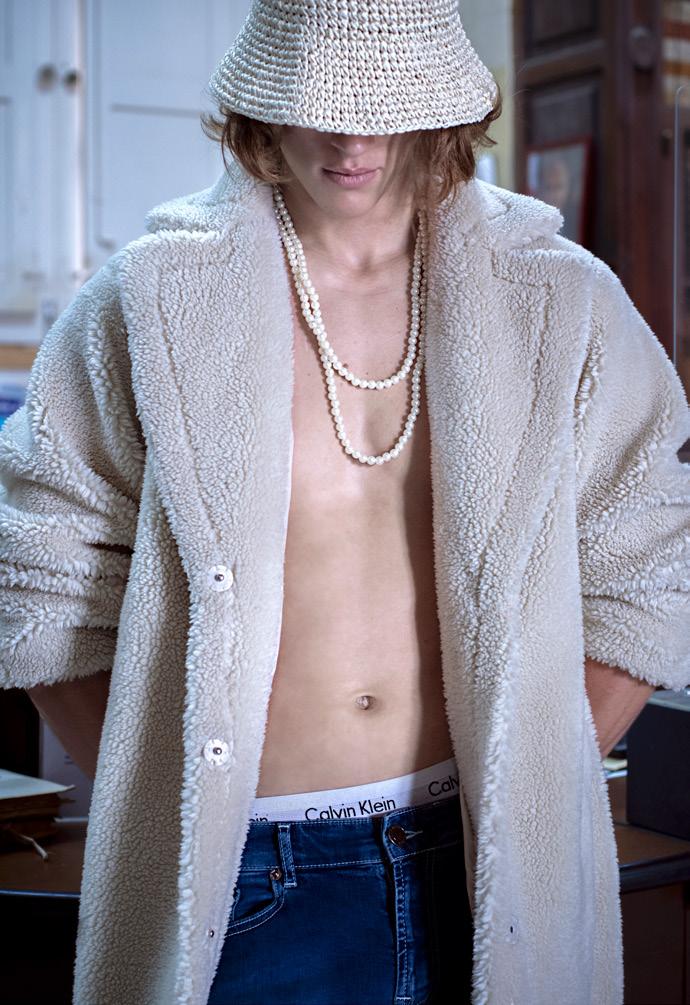 Coat by Stand Studio at Bettiwears
Coat by Stand Studio at Bettiwears






ISSUE 73 MONEY PATEK PHILIPPE Pilot travel time rose gold €46,050 / elcol.com AUTUMN APPAREL MONEY welcomes the new season with a show of delectable fashion pieces. YEEZY GAP ENGINEERED BY BALENCIAGA Padded shell bomber jacket €360 [All items available from mrporter.com] SAINT LAURENT Logo-print leopard-print velvet weekend bag €1,250 FASHION








MONEY THE DESIGN, CREATIVITY & ARTS EDITION 57 SAINT LAURENT 2cm logo-embellished leather belt €345 RICHARD JAMES Slim-fit double-breasted cotton-needlecord suit jacket €915 DRIES VAN NOTEN Camp-collar printed jacquard shirt €535 TOM FORD Jack adorned patent-leather loafers €1,450 AMIRI Mx1 skinny-fit panelled distressed jeans €1,170 LORO PIANA Tapered cottontwill chinos €560 FENDO Logo intarsia-knit sweater €805 CHRISTIAN LOUBOUTIN Croc-effect leather cardholder €320 FASHION
EXPLORING THE ROLE OF ENTREPRENEURSHIP IN THE CREATIVE SECTOR
Giselle Borg Olivier explains how Malta’s artists and creatives have the chance to learn and improve their entrepreneurial skills through an upcoming FPEI initiative.
The entrepreneurial mindset is a catchphrase that has been bandied around for a while and has gained traction in recent years, especially with television shows such as Shark Tank, where entrepreneurs pitch their ideas with the hopes of bringing in financial investment.
Being enterprising entails using the resources one has at their disposal to create or empower a situation, while being entrepreneurial is about seeking financial growth and stability from that situation. When an enterprising person ventures into the entrepreneurial space, it can set the wheels toward a lucrative project.
Based on this mindset, the Entrepreneurship Programme for Creatives, Artists and Cultural Managers aims to support the growth of Malta’s creative or cultural sectors by building the entrepreneurial skills of individuals or groups working within them through training sessions.
The initiative is led by the Foundation for the Promotion of Entrepreneurial Initiatives (FPEI) as part of the Investment in Cultural Organisations (ICO) funding programme by the Arts Council Malta (ACM). “At FPEI, we understand the power of combining an entrepreneurial mindset with a creative mindset—the concurrence of art, creativity, and culture with a financially-sound plan can lead to a successful and lucrative business proposition,” says Giselle Borg Oliver, Foundation Manager at FPEI.
“Following the success of the first round of this programme, we are excited to help more local artists and creatives do what they do best while encouraging their entrepreneurial skills with alternative finance solutions such as the use of crowdfunding.”
Zaar, Malta’s only reward/donation-based crowdfunding platform, was the first initiative set up by the FPEI to offer an alternative source of funding to the island’s entrepreneurs. “We invite anyone involved in the creative industry or interested in developing their entrepreneurial knowledge to join us every Thursday between 18:30 and 20:30, starting on 22 September until 3 November. The sessions will be held at Valletta Design Cluster and will focus on developing techniques adapted from the business world to their work or projects. Those interested are asked to register online to confirm their
participation and attendance.”
Arts Council Malta aims to nurture and develop creative potential through their funding programmes by honing professional skills and supporting community engagement within the creative industry. Meanwhile, FPEI uses funds received from ACM to introduce comprehensive mentoring programmes and to organise high-quality workshops, seminars, and educational sessions that feature experts in their respective fields and cover topics such as project planning, forecasts, sales and marketing, green and sustainable event management, media handling, pitching, and e-commerce.
People interested in participating in the Entrepreneurship Programme for Creatives, Artists and Cultural Managers can register at bit.ly/ECACMForm.

ISSUE 73 MONEY58 NEWS

We build remarkable brands. bloom@bloomcreative.com.mt To view a selection of our best work, visit bloomcreative.com.mt
CHRONOMAT


VALLETTA - PORTOMASO CONCEPT STORE



































































































 Shirt by Prada at Bettiwears
Shirt by Prada at Bettiwears
 Polo neck by Dan John; cap by Charles & Ron; trench coat stylists’ own
Polo neck by Dan John; cap by Charles & Ron; trench coat stylists’ own
 Shirt and pants by Charles & Ron
Shirt and pants by Charles & Ron
 Jeans by Dan John; shirt by Charles & Ron
Jeans by Dan John; shirt by Charles & Ron
 Coat by Stand Studio at Bettiwears
Coat by Stand Studio at Bettiwears
















